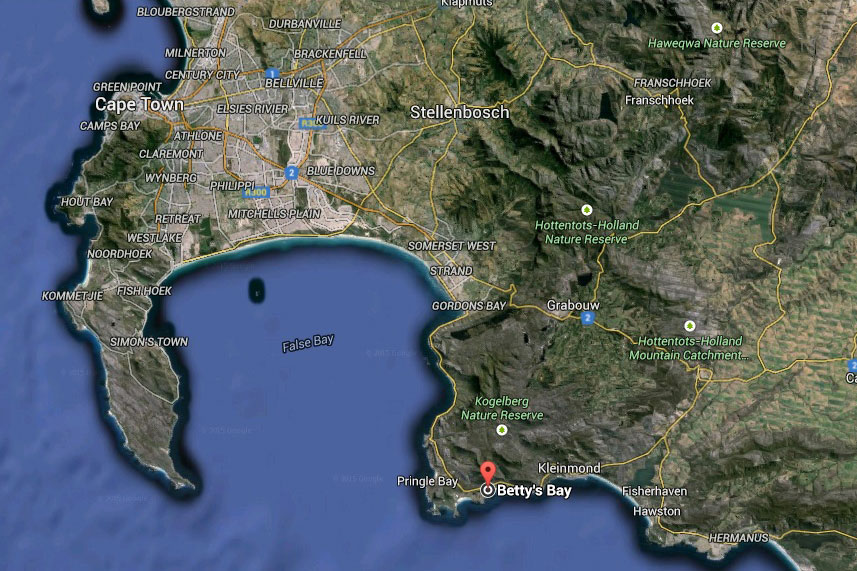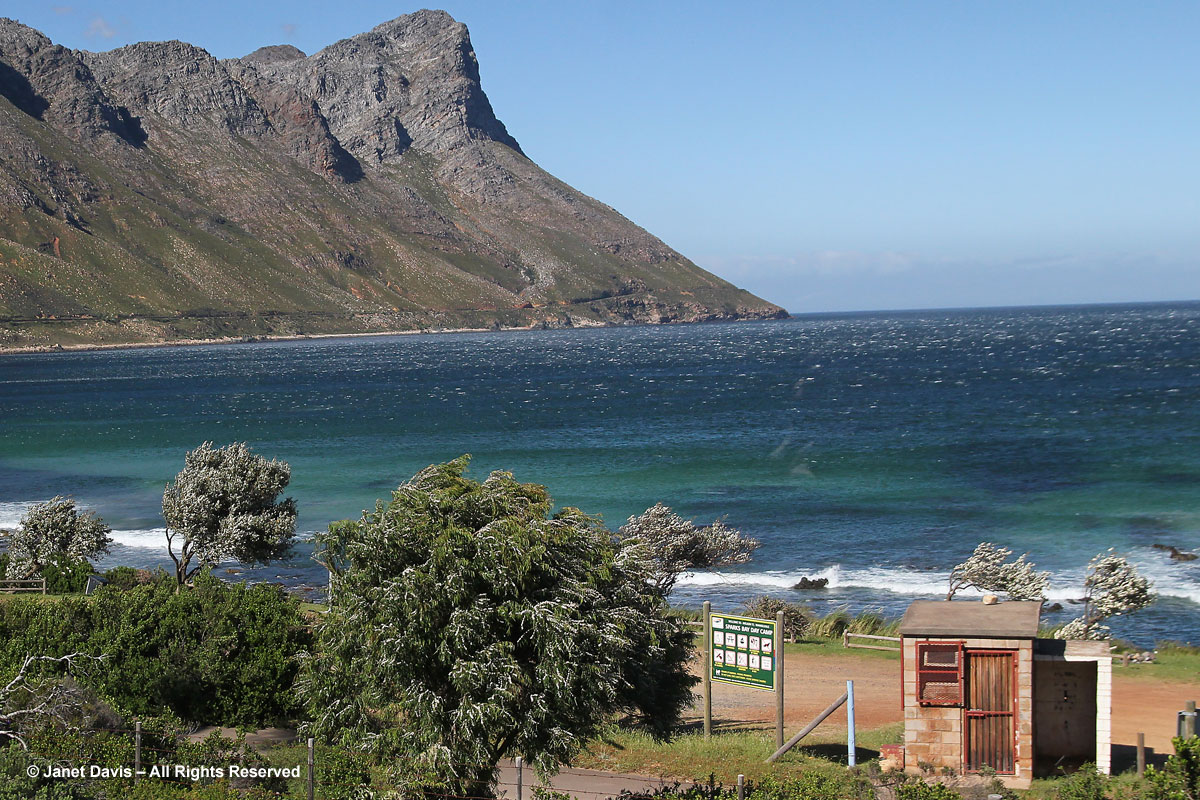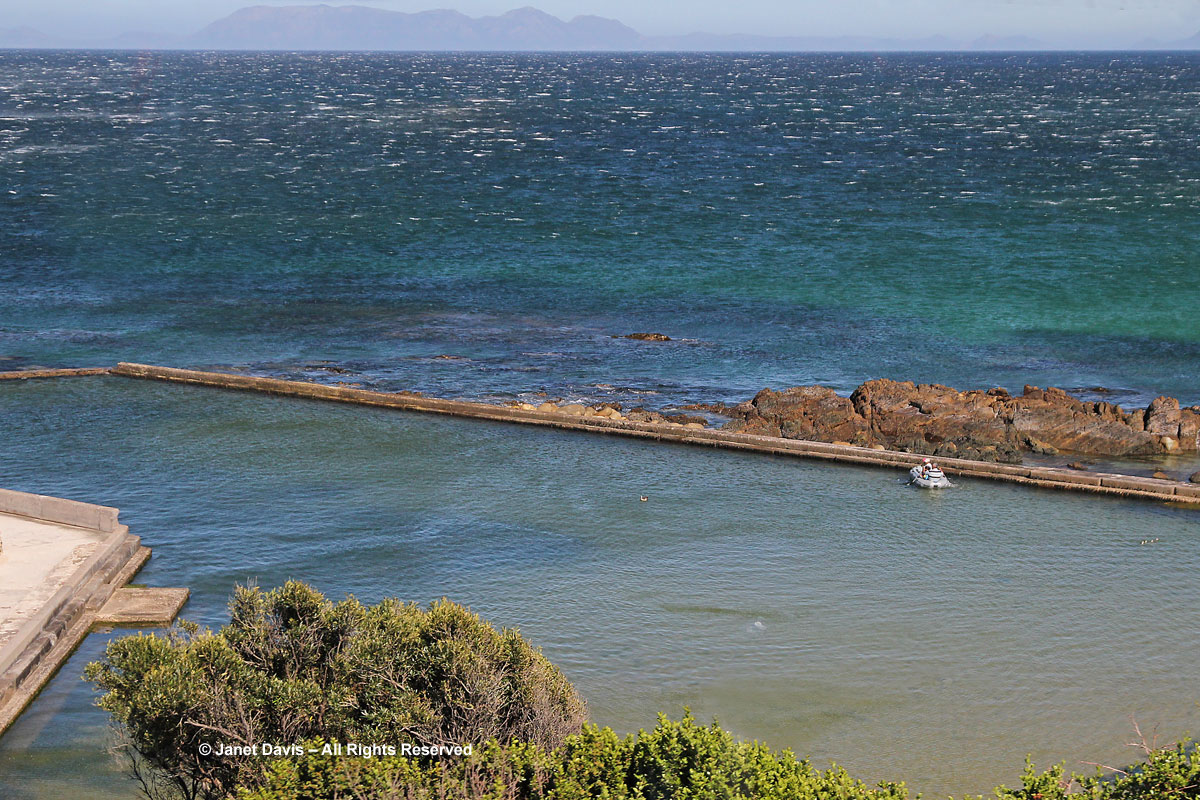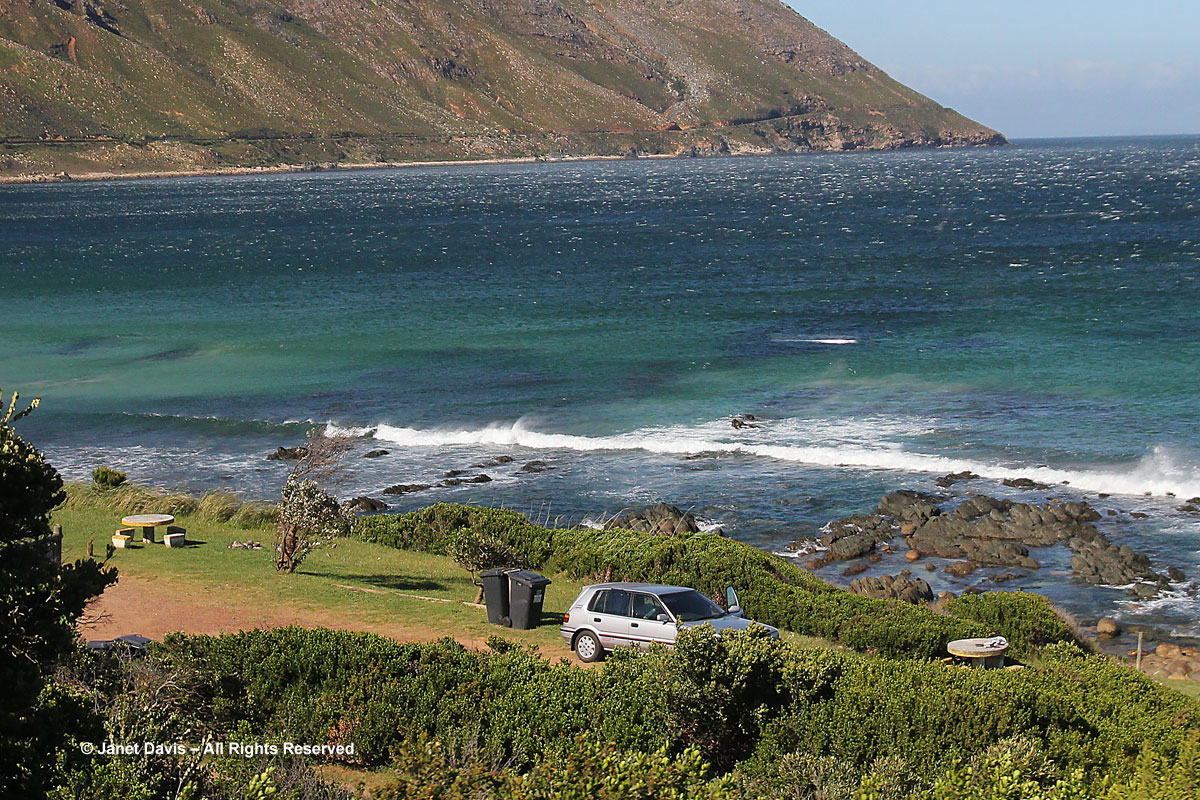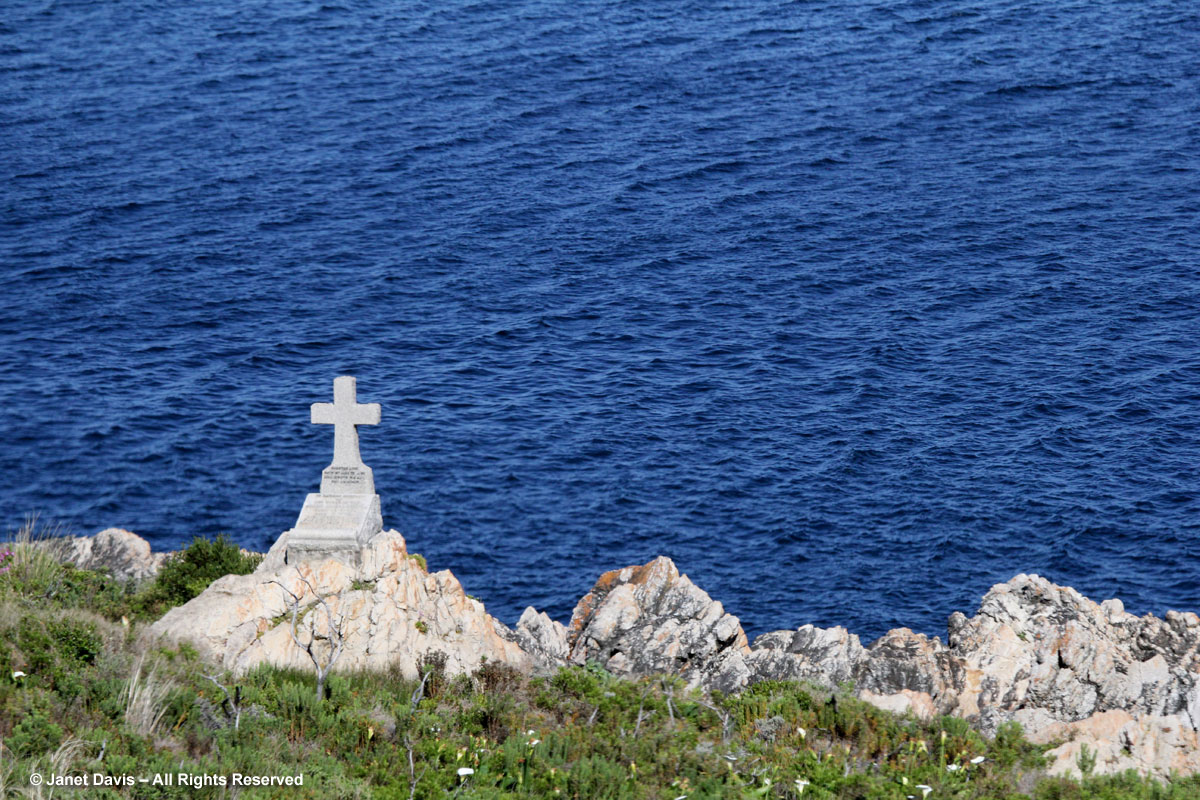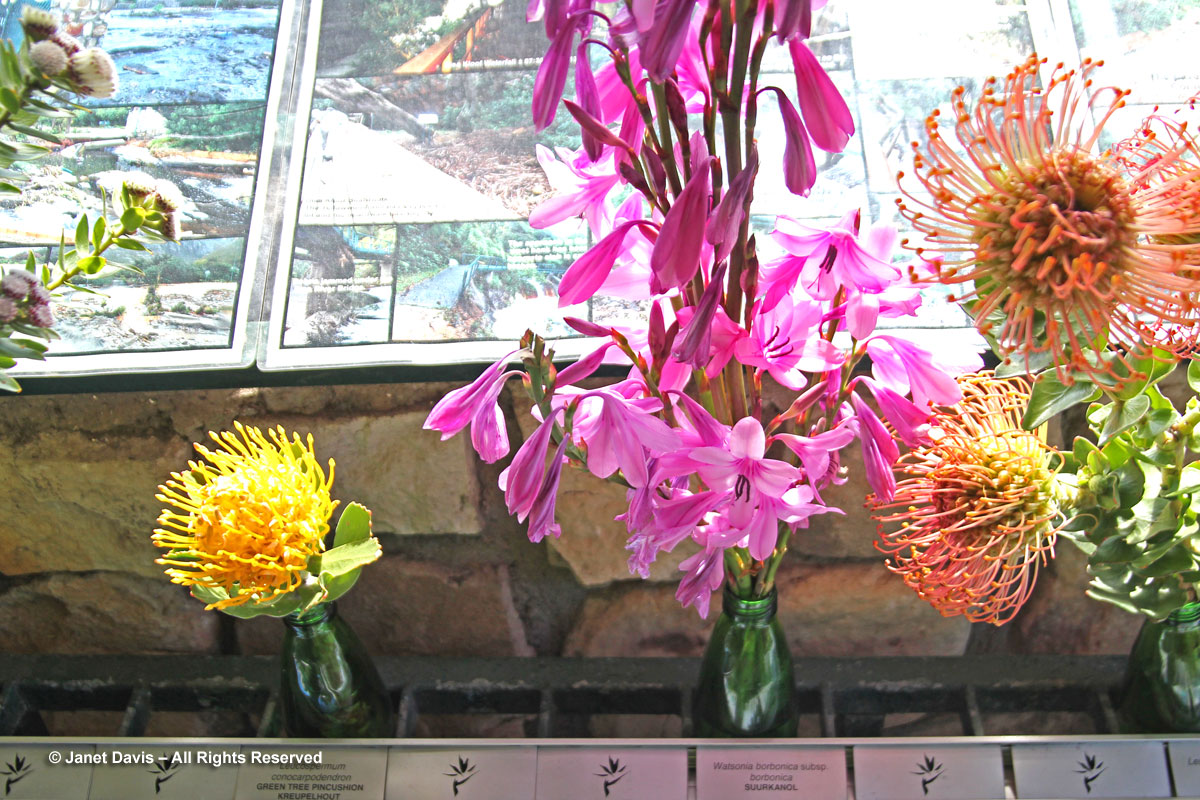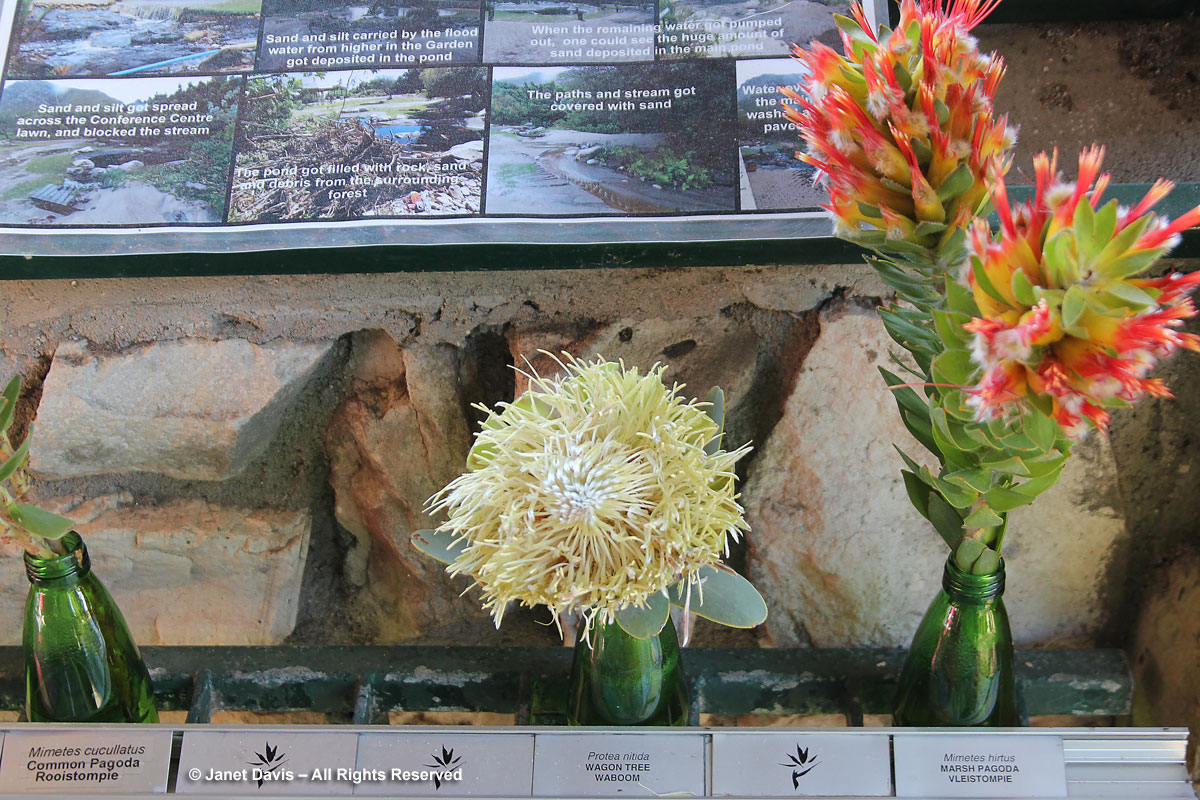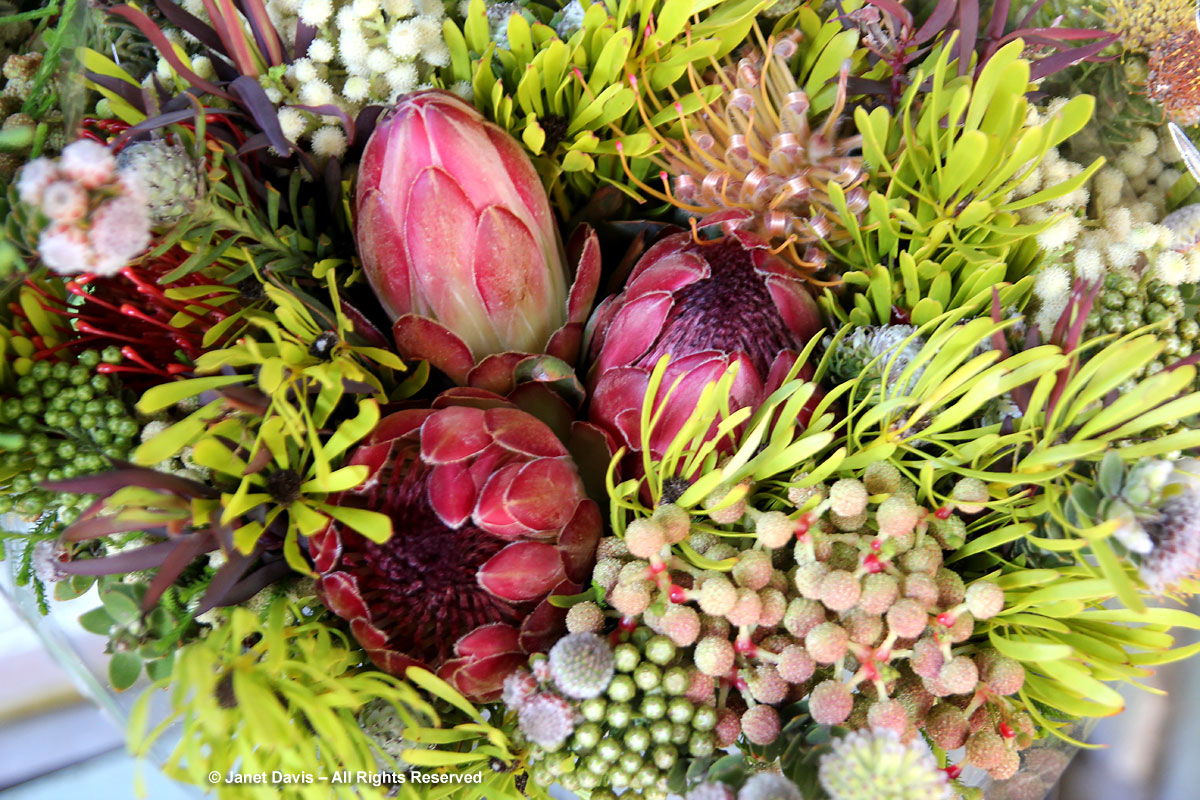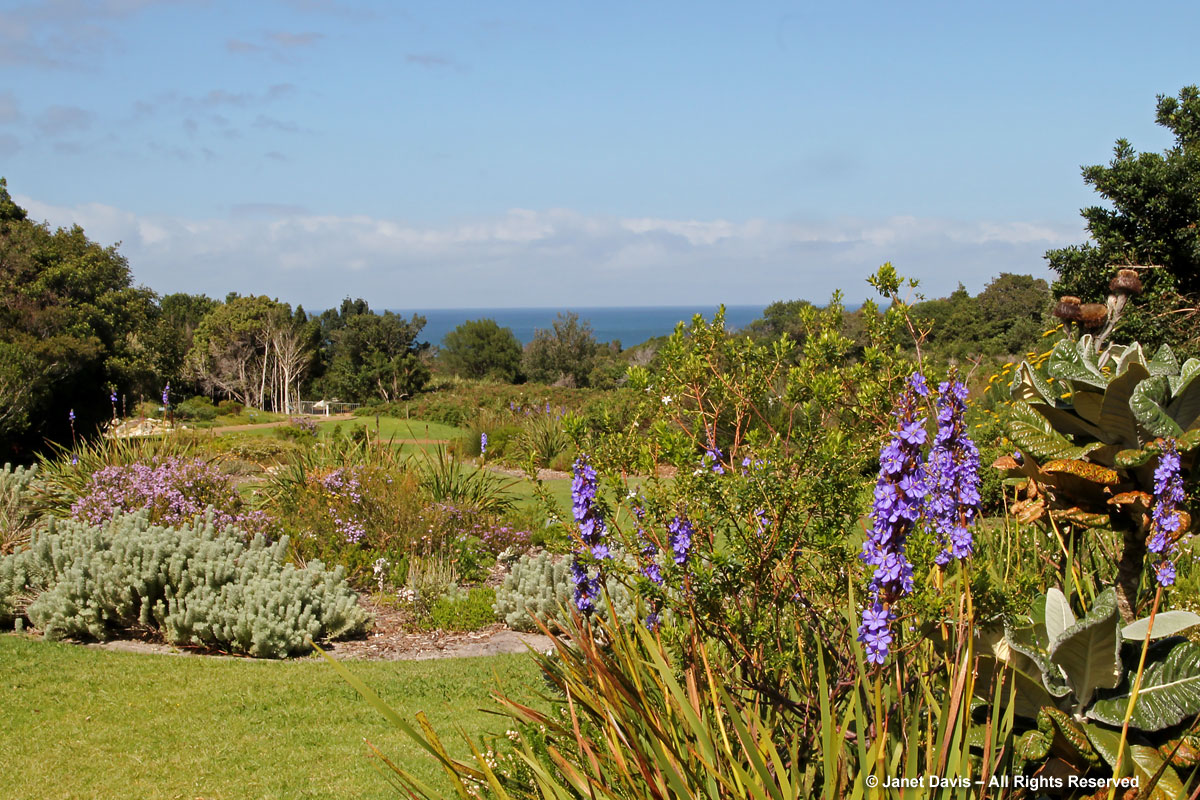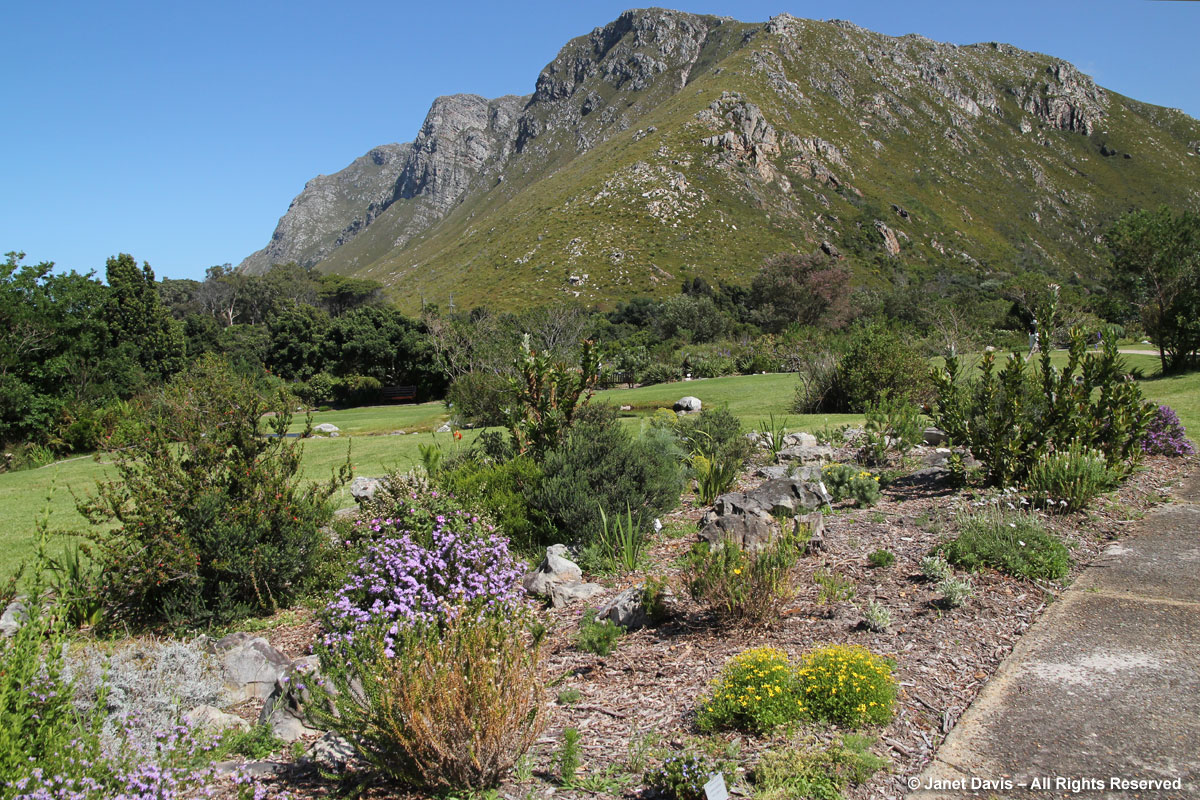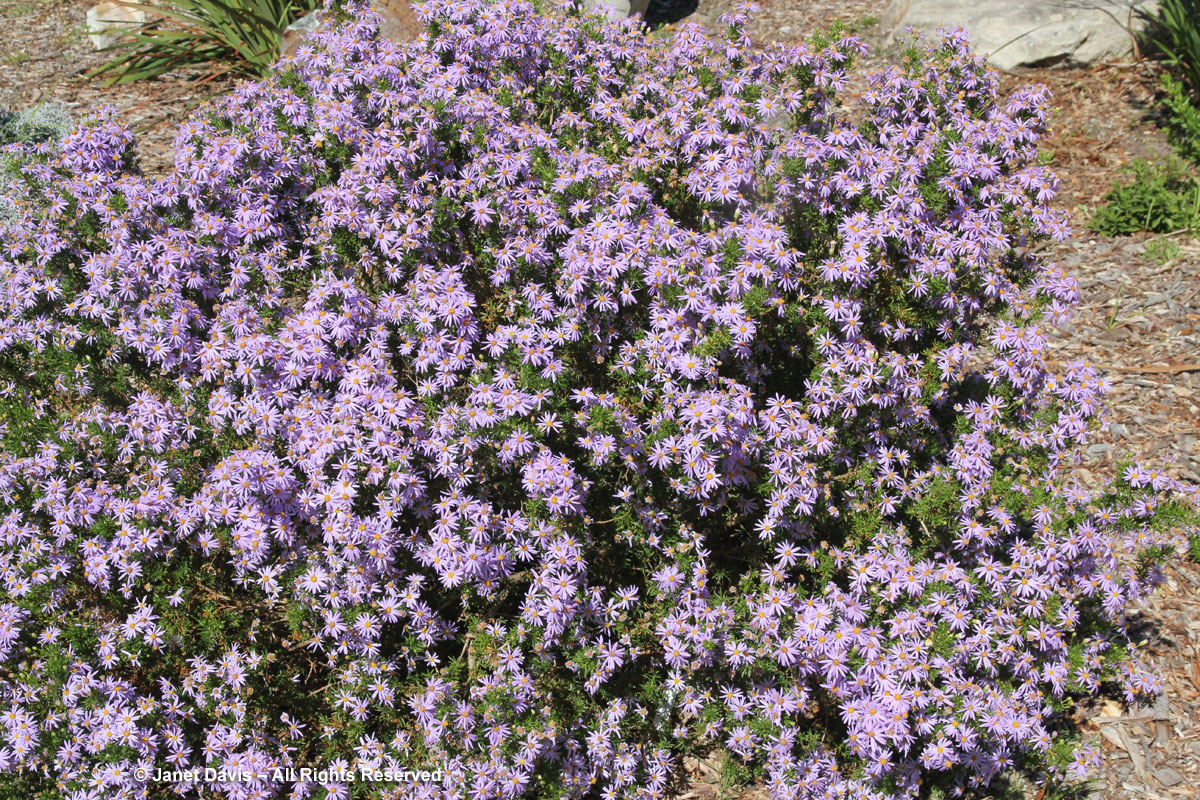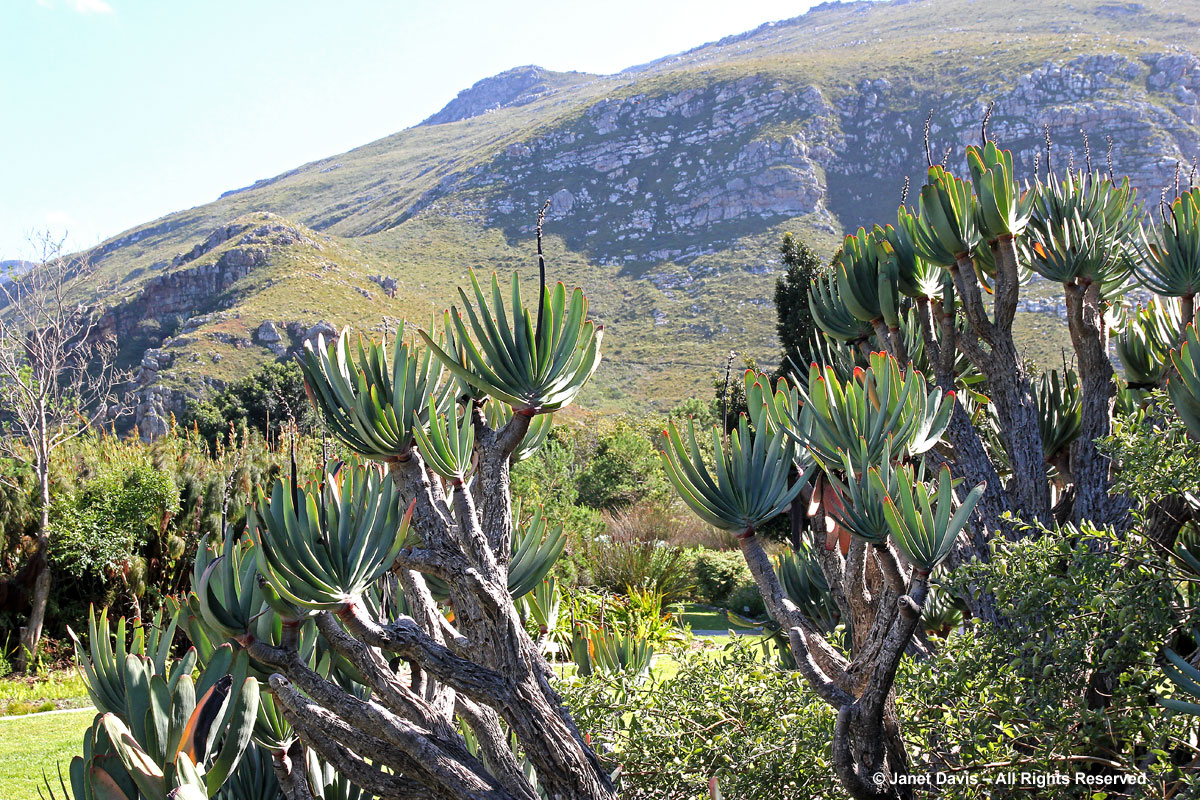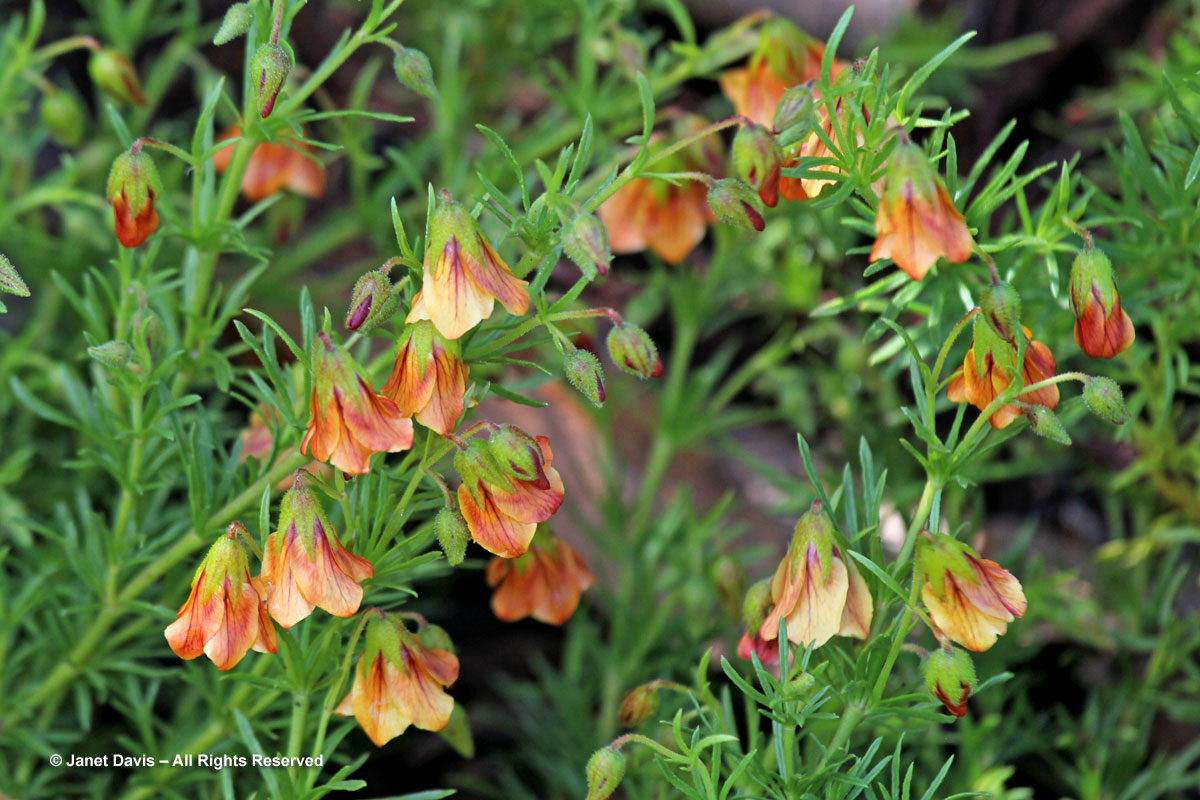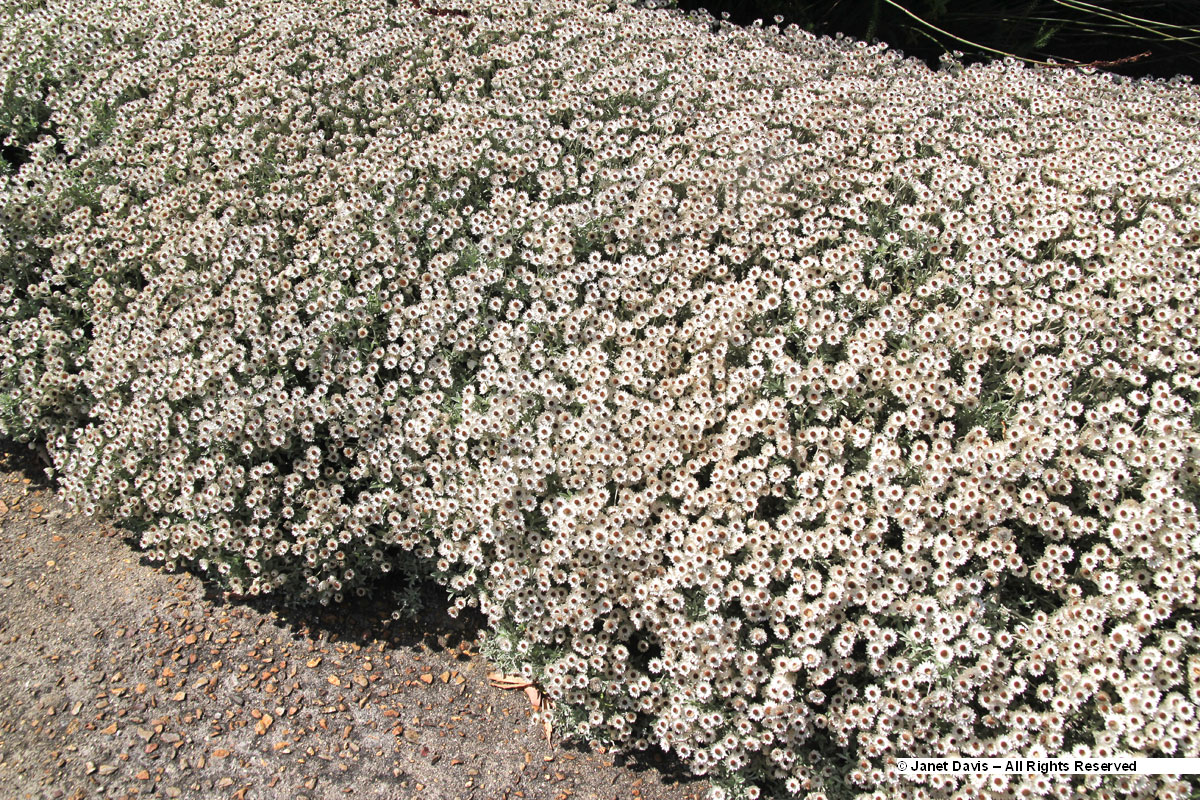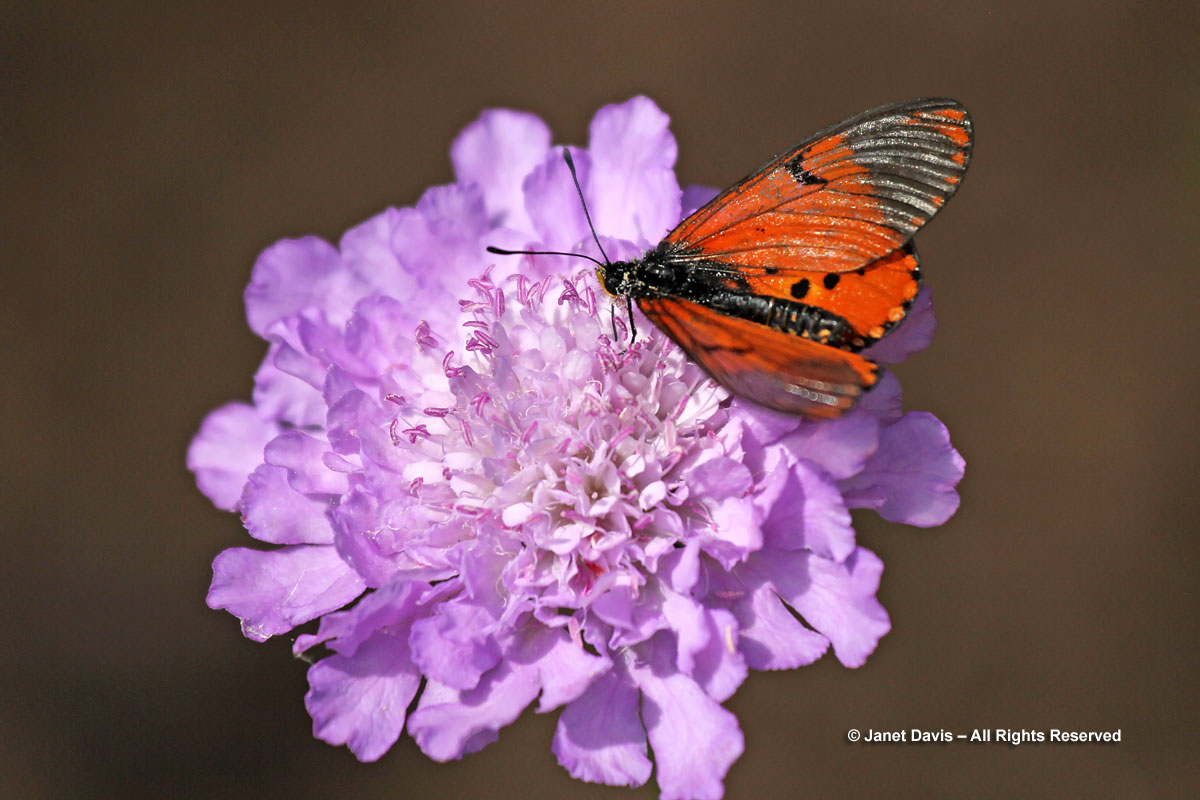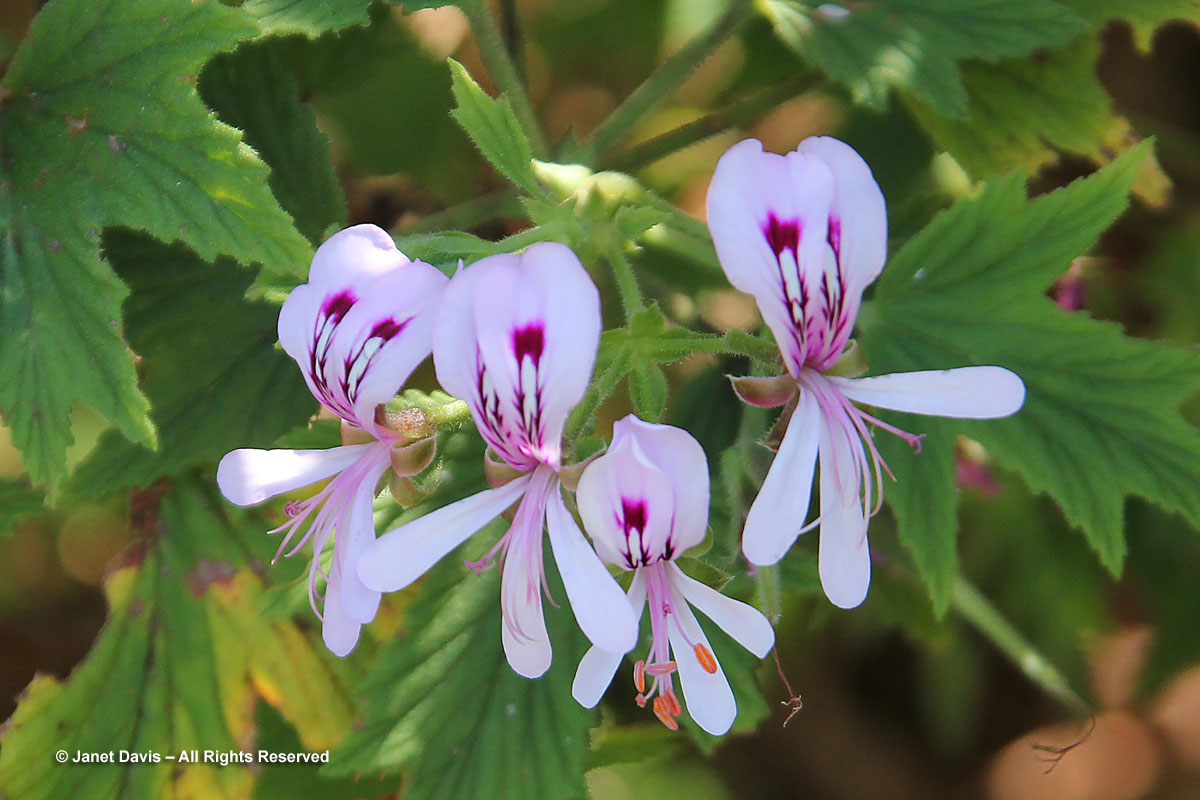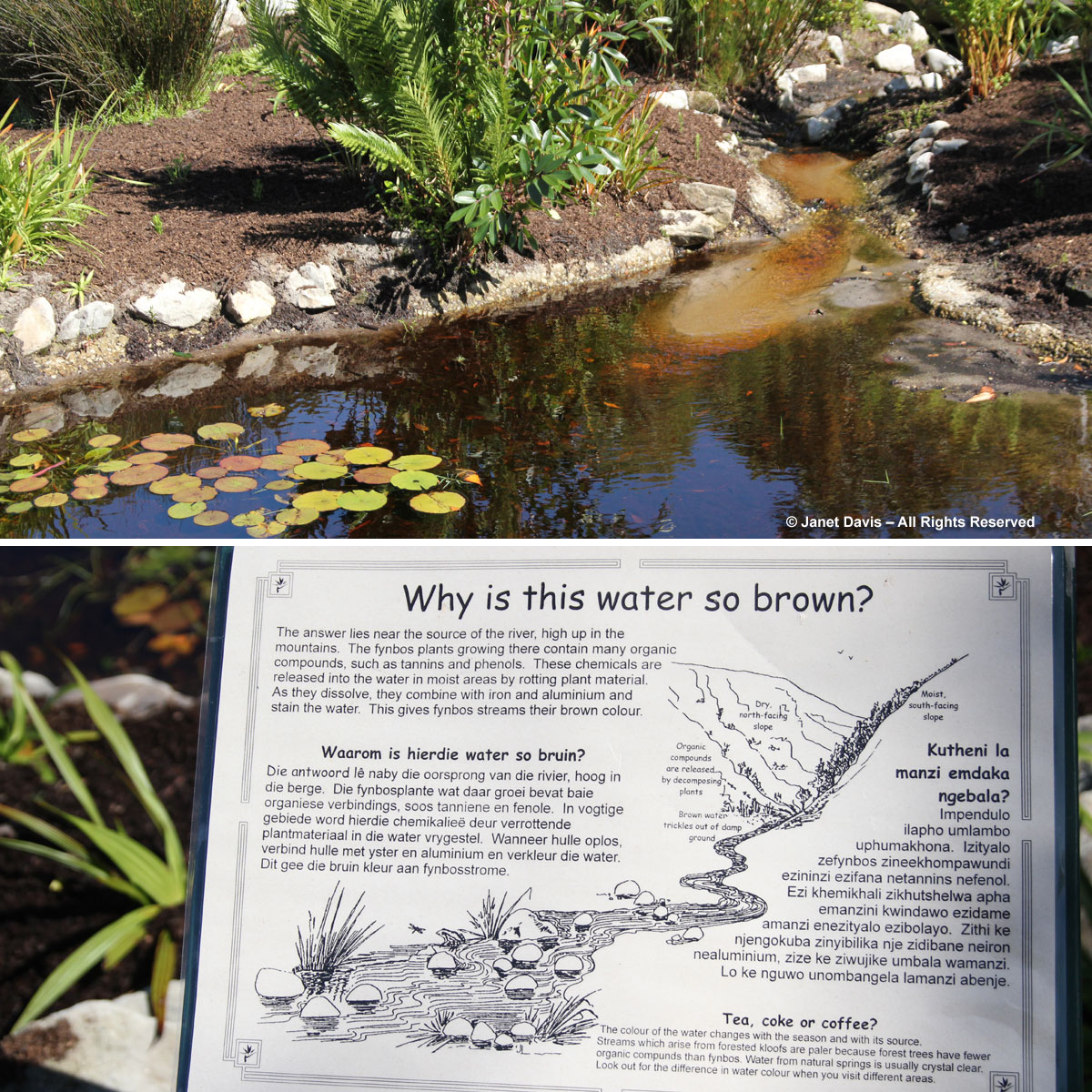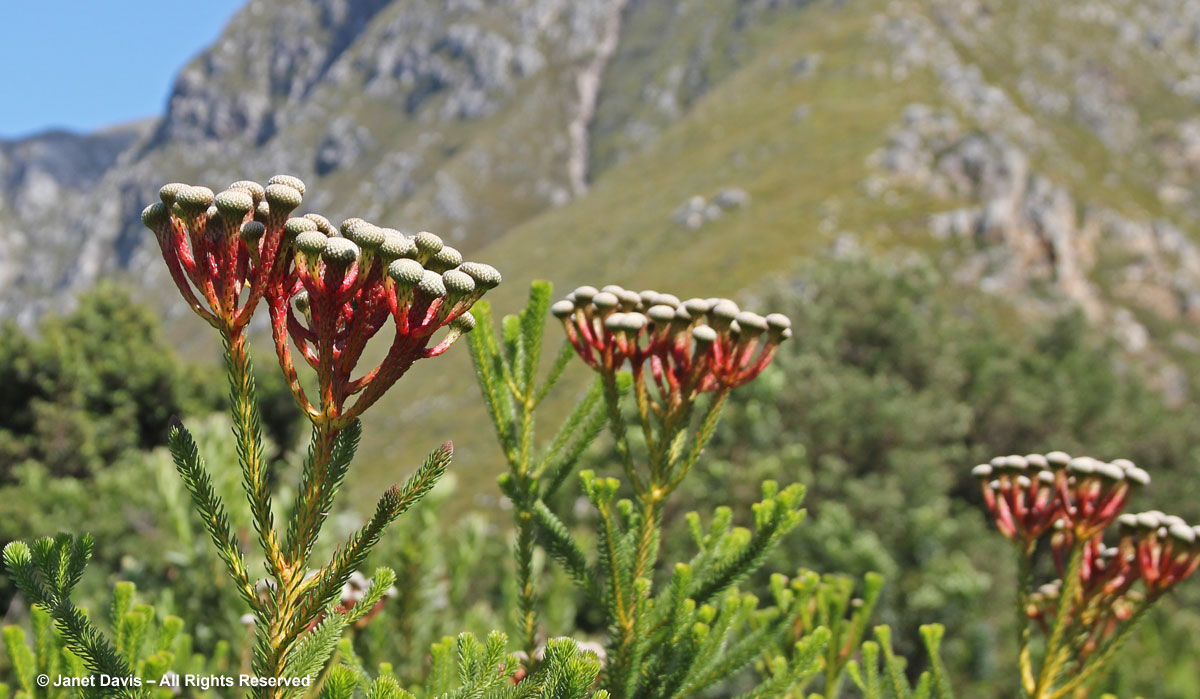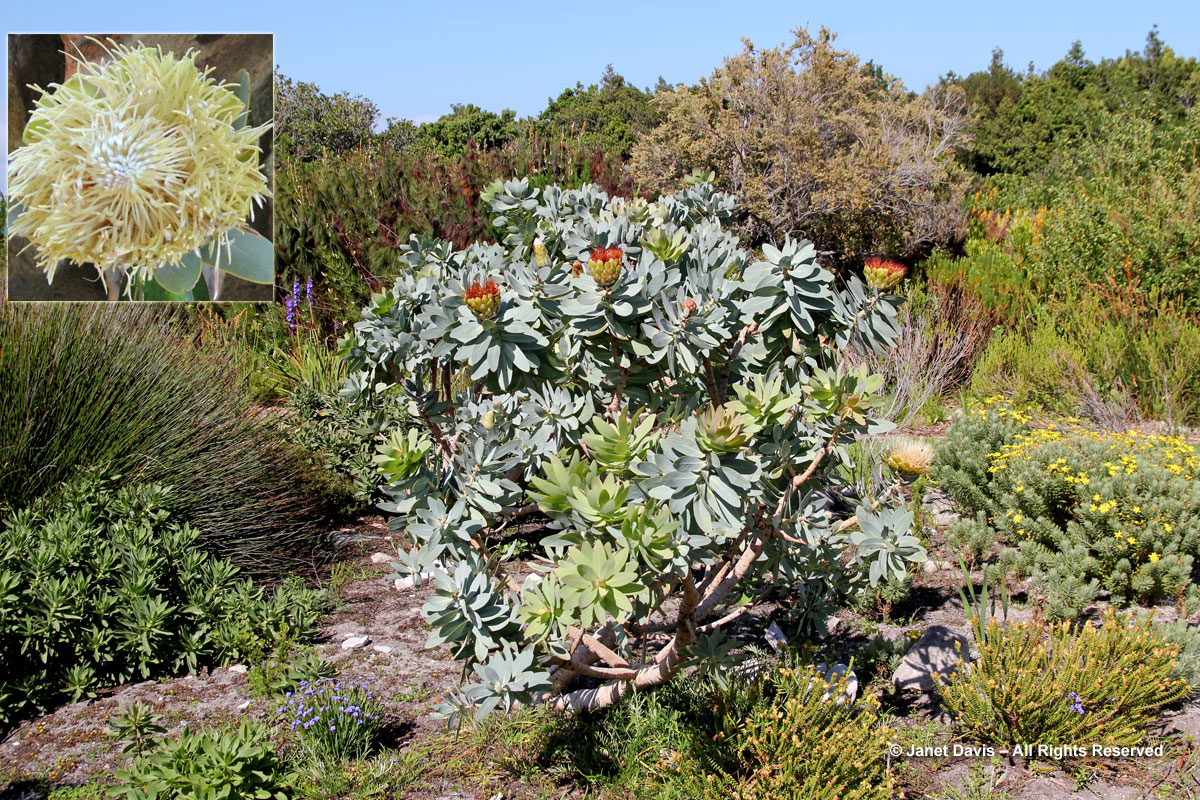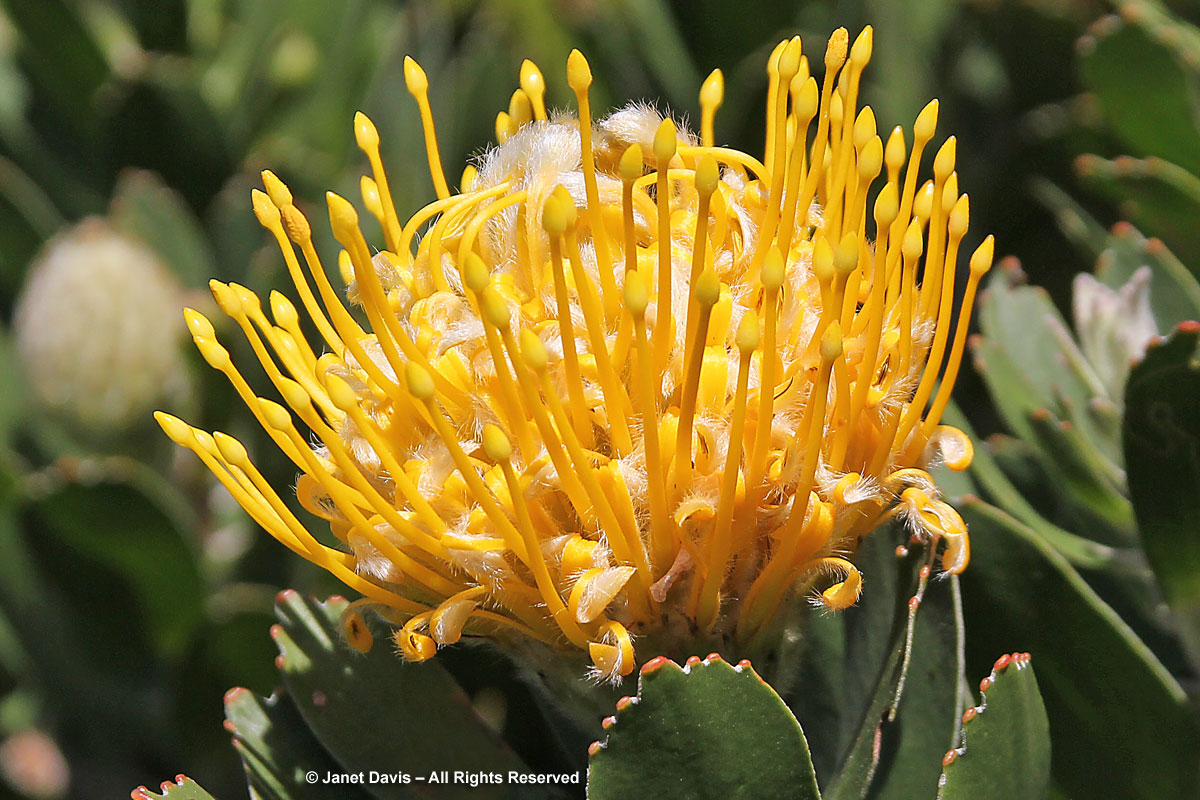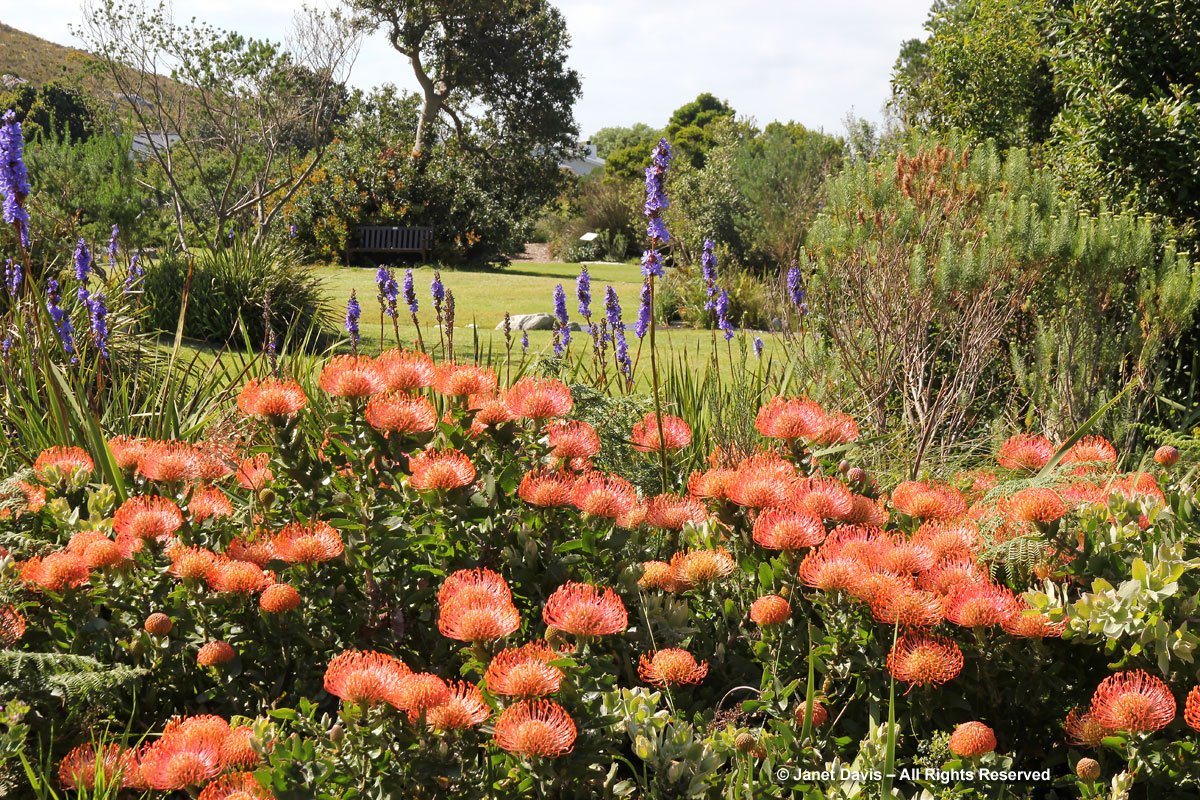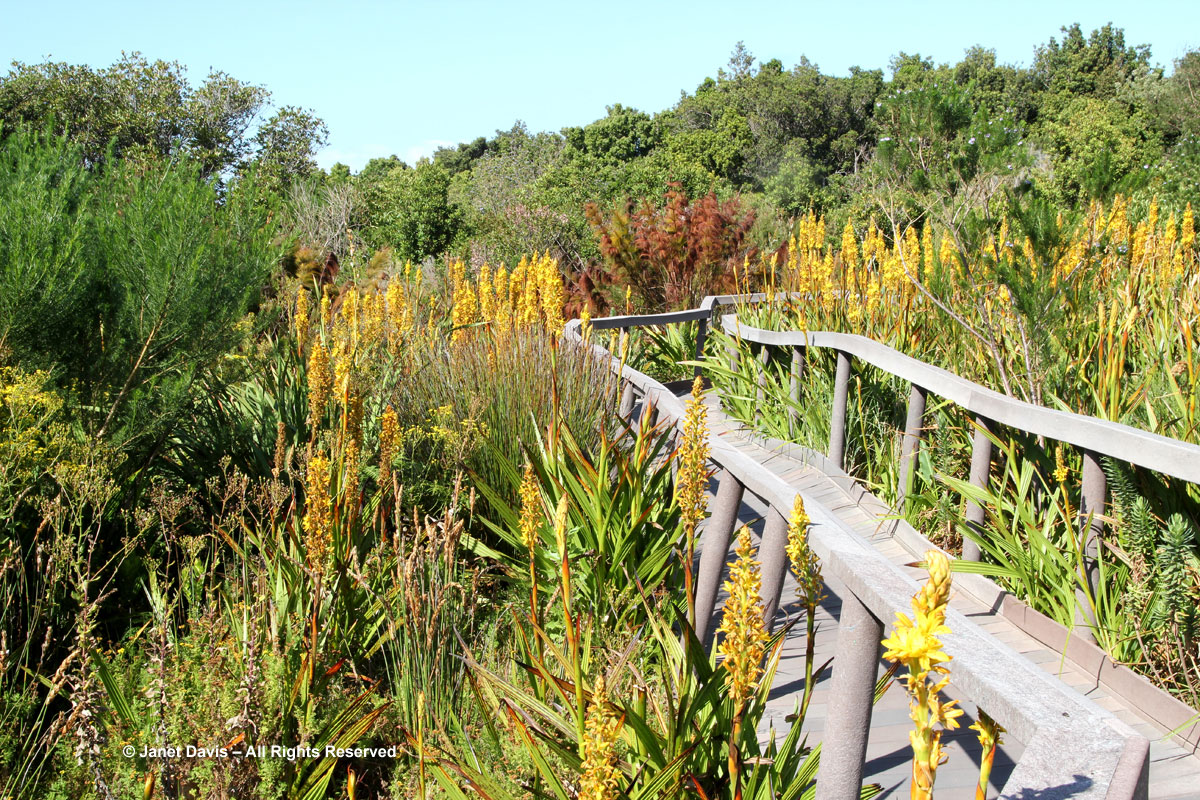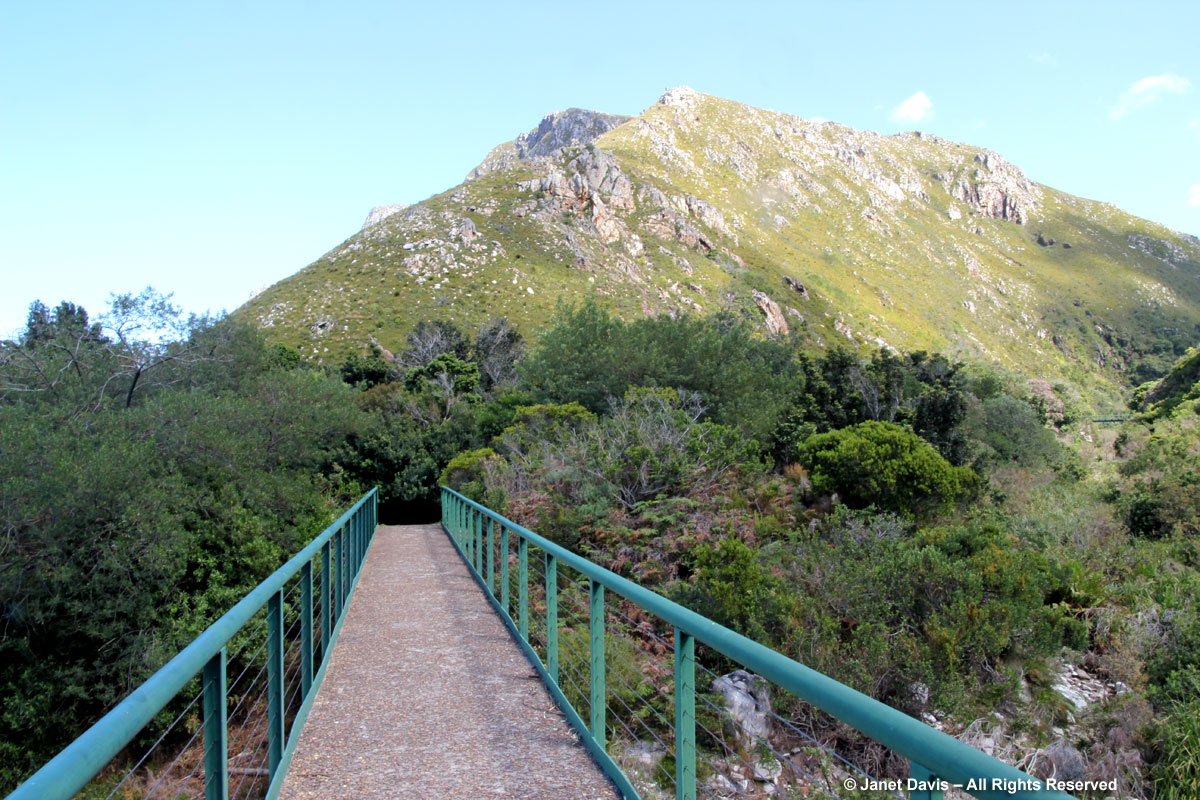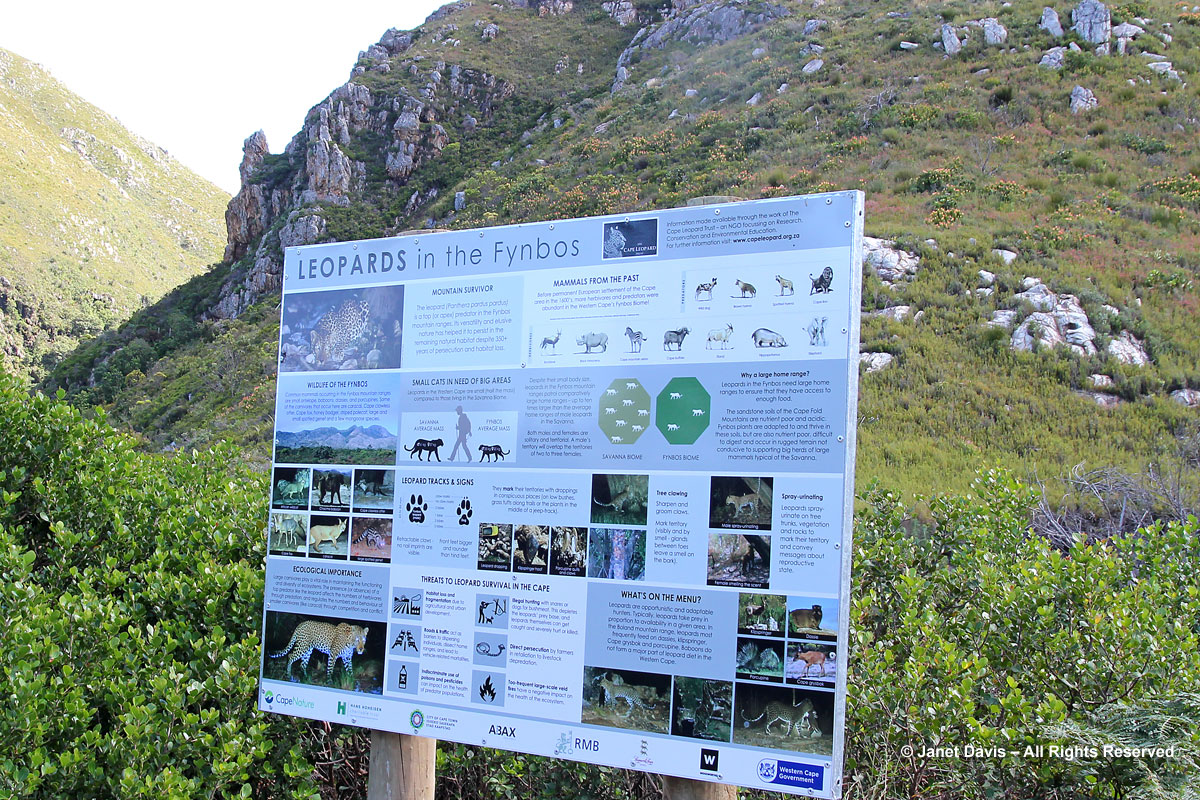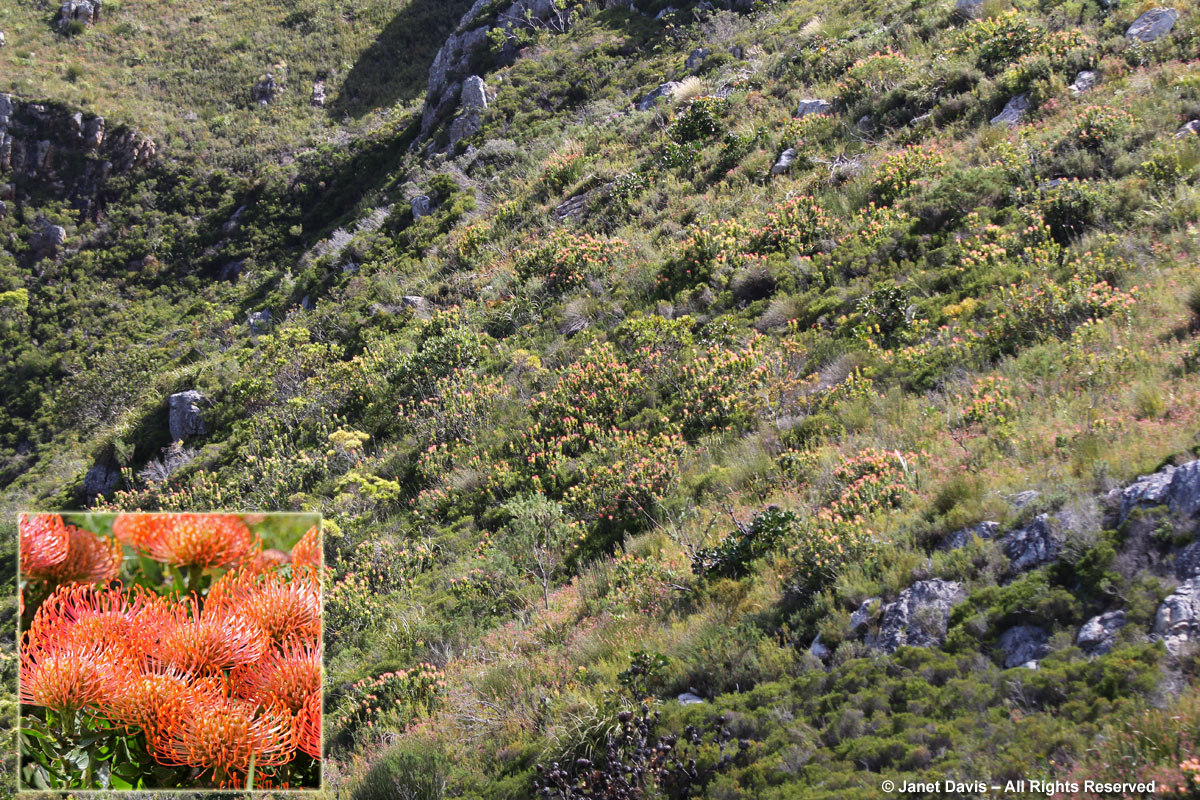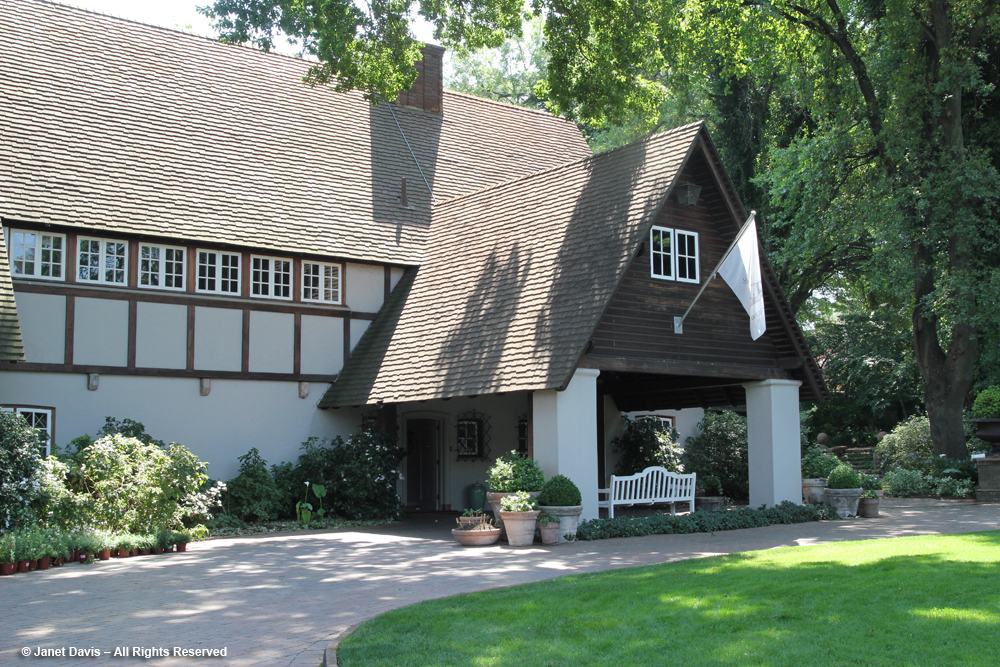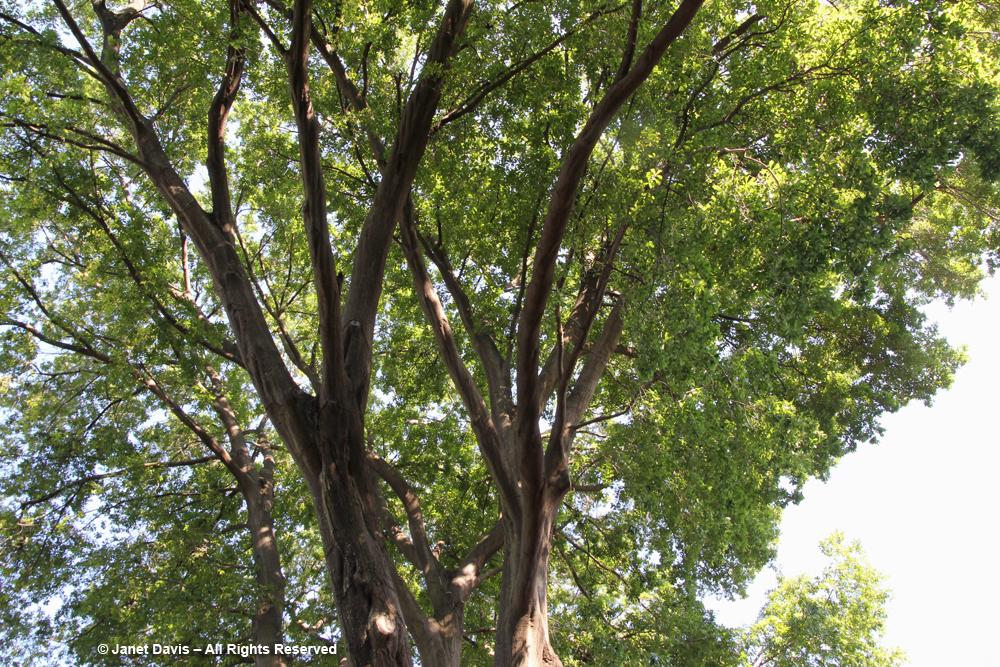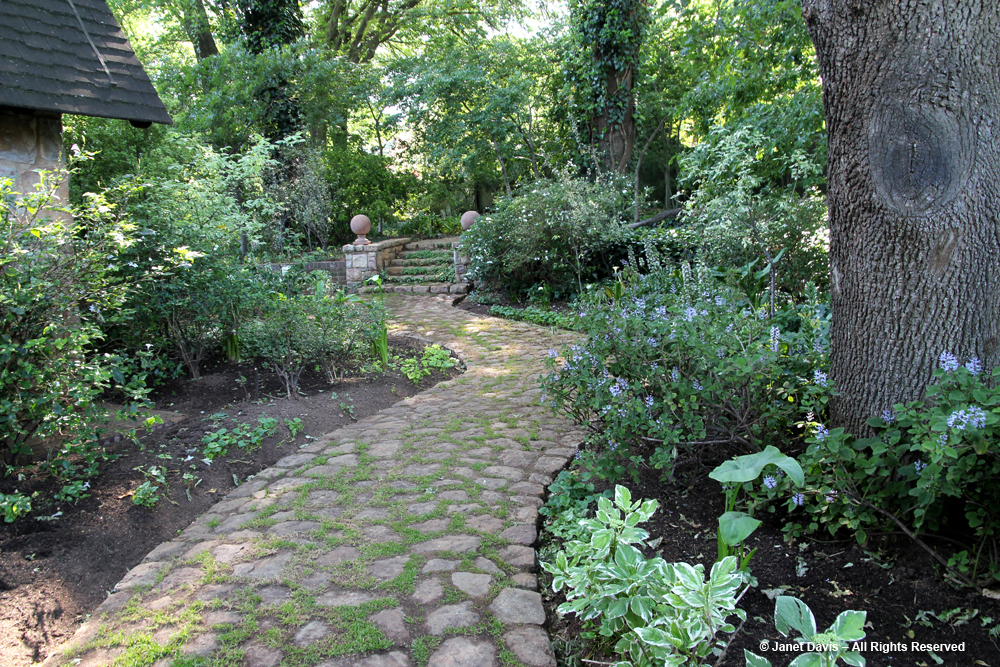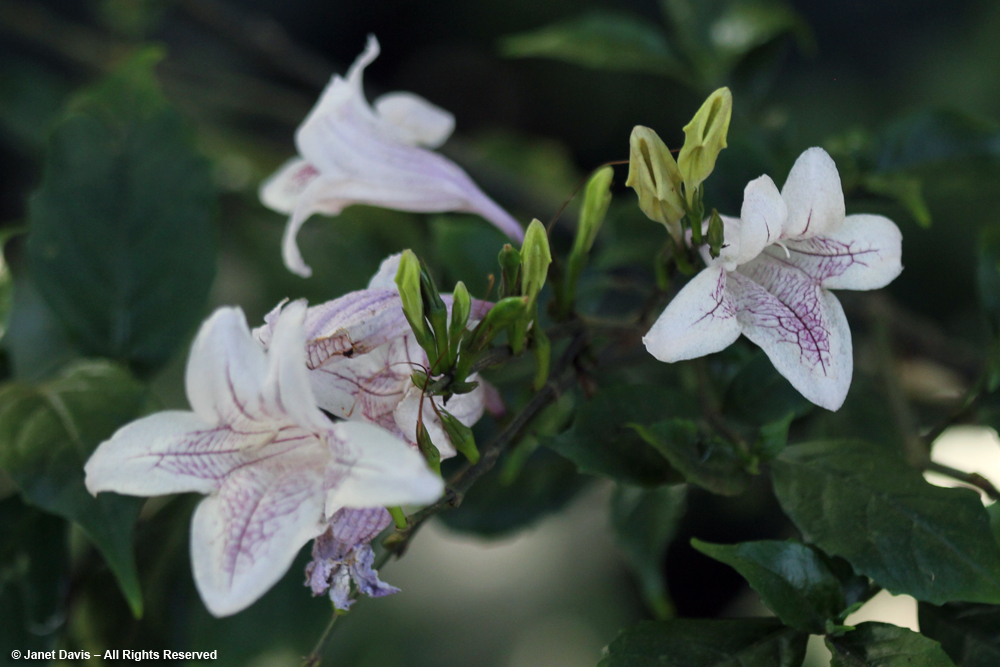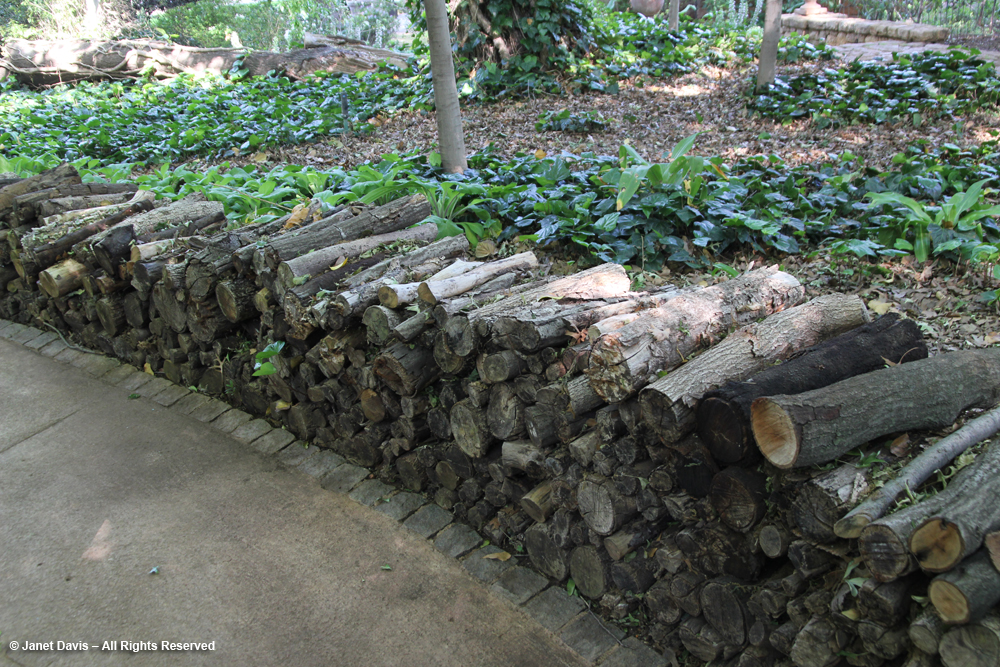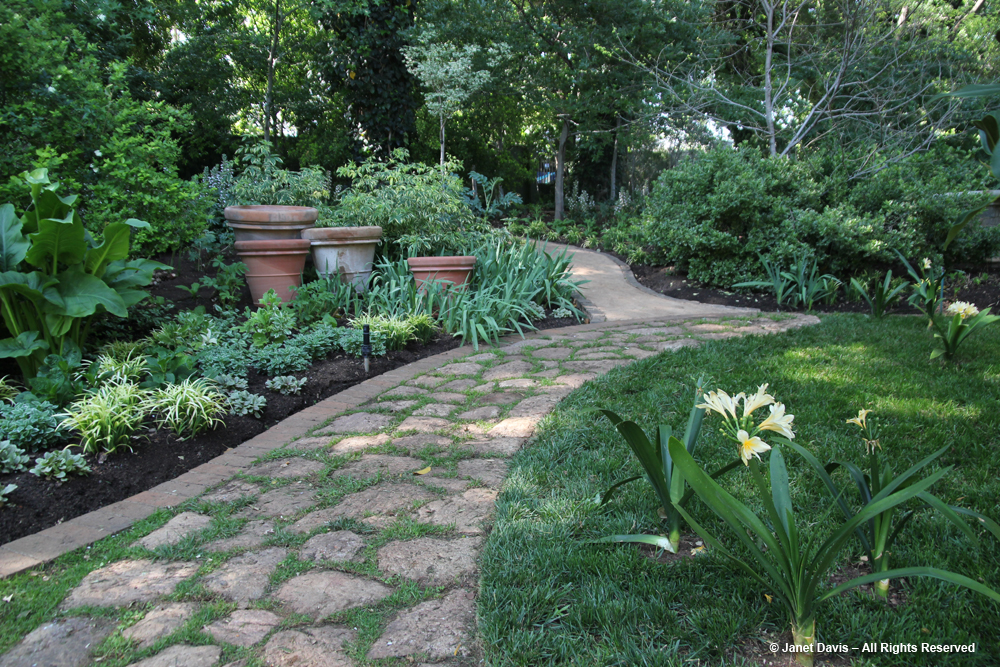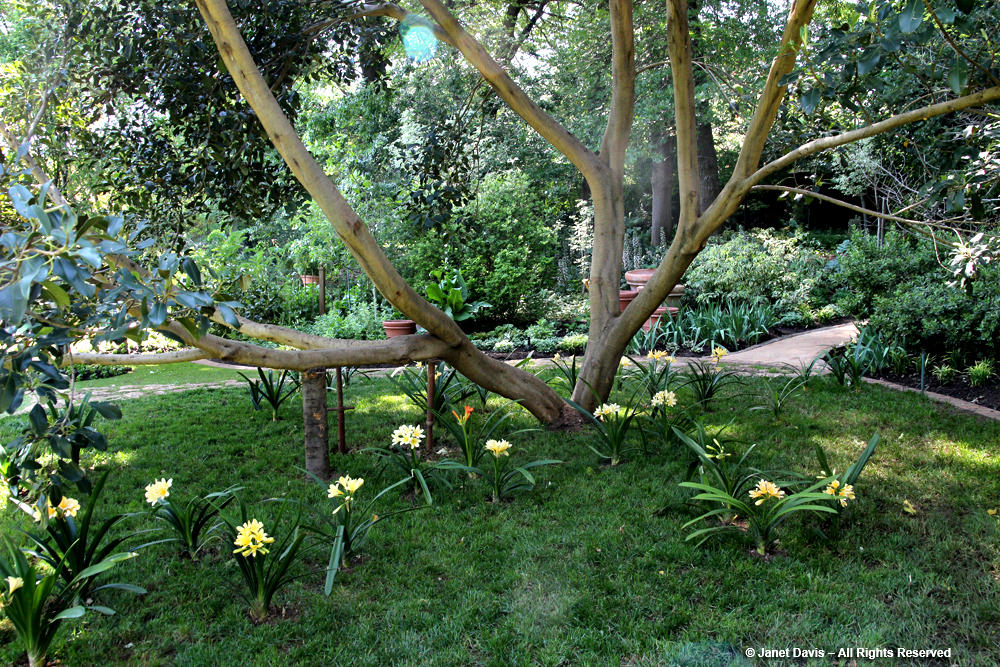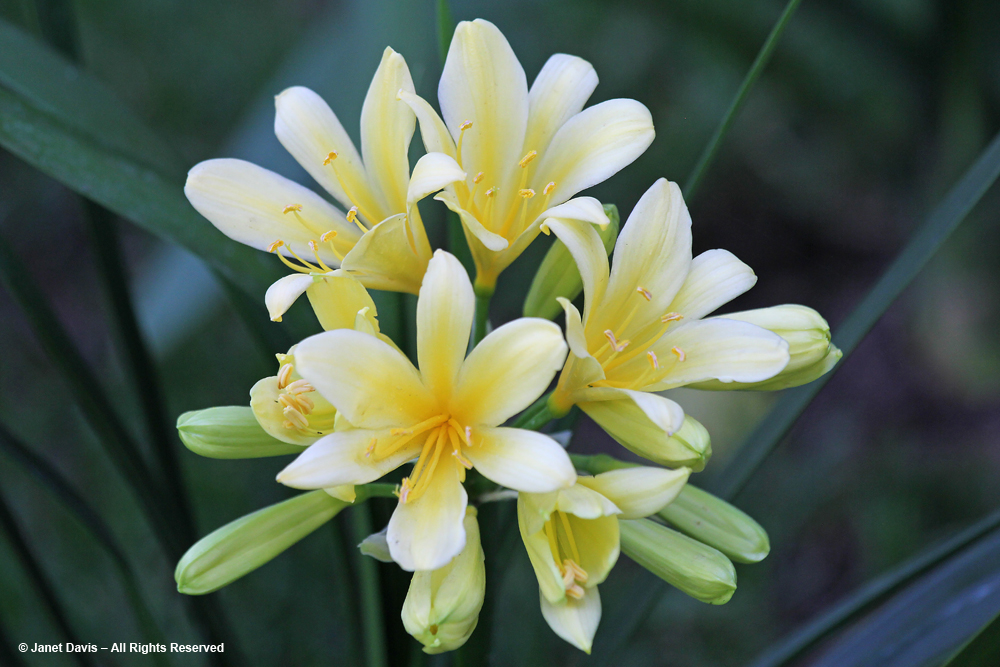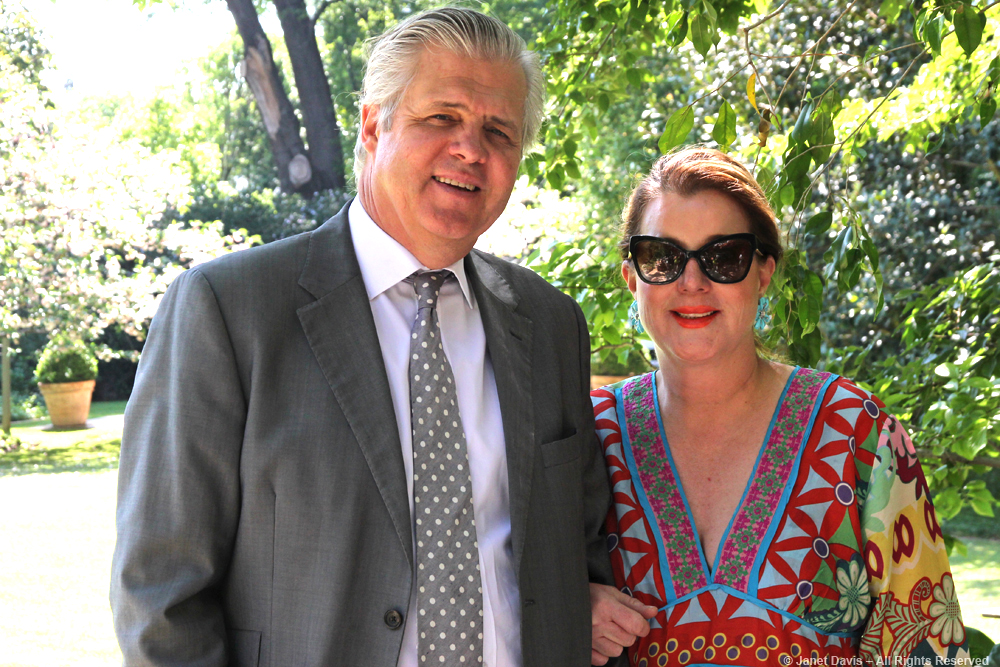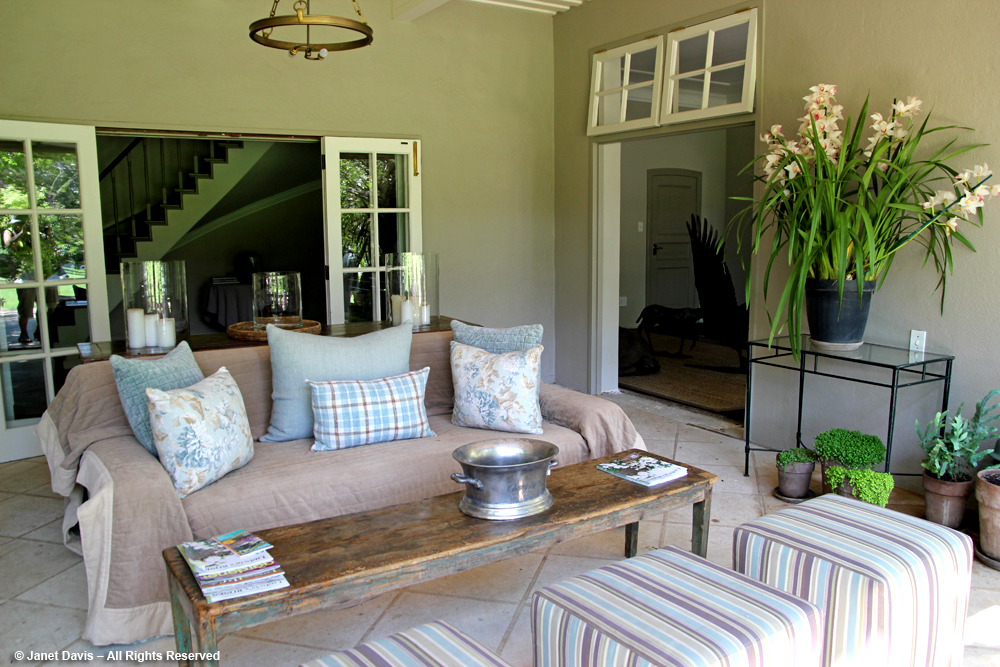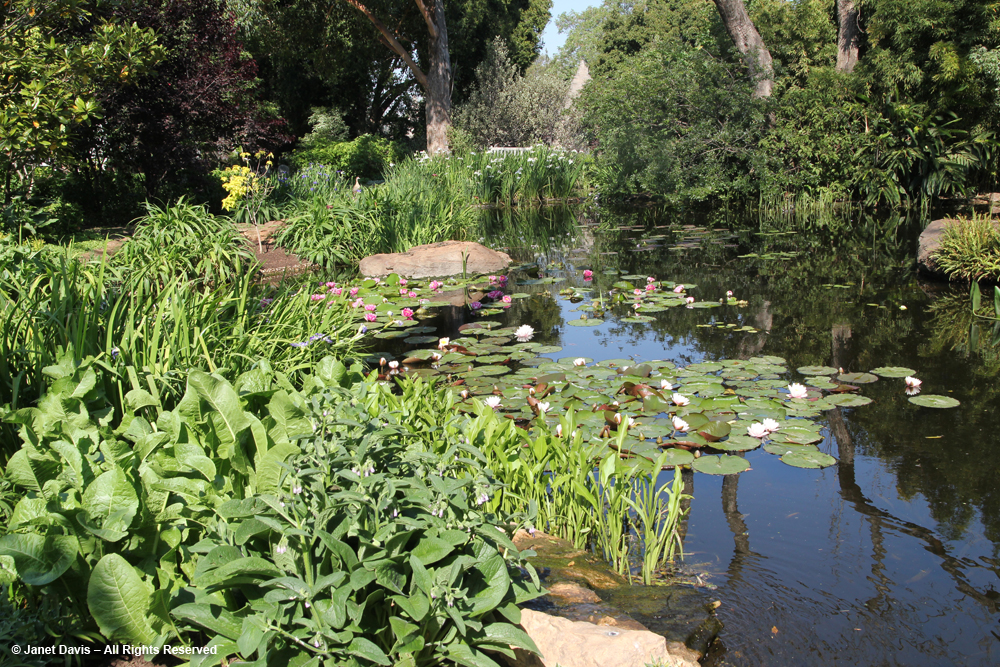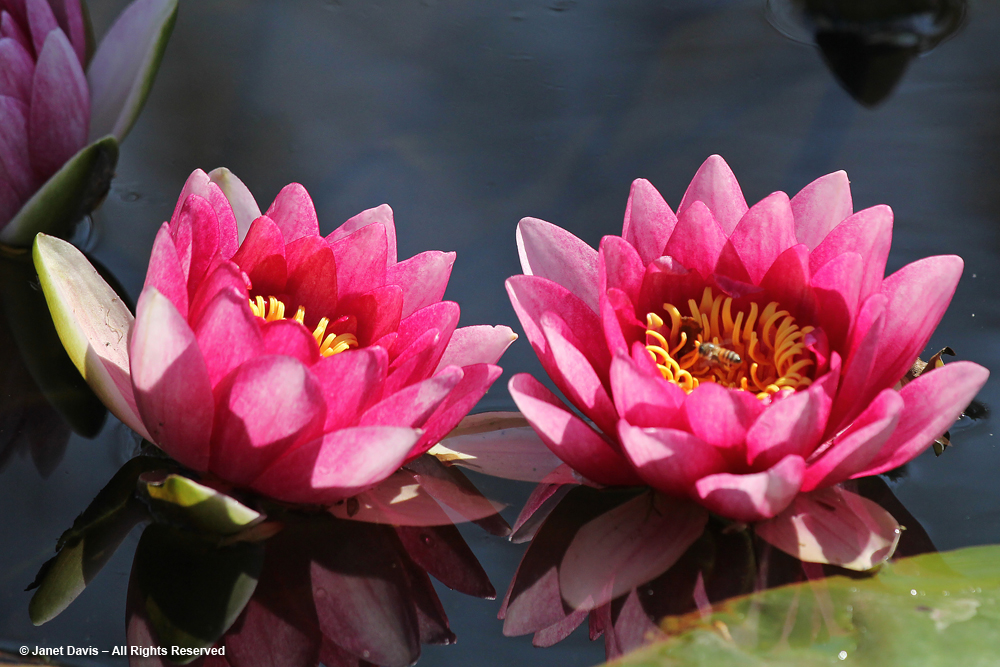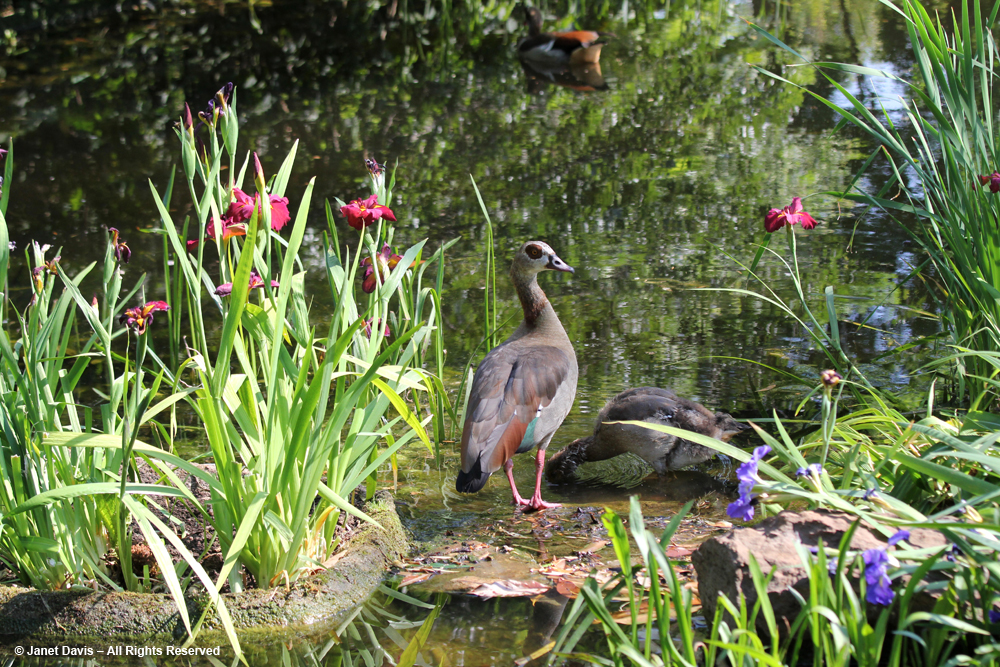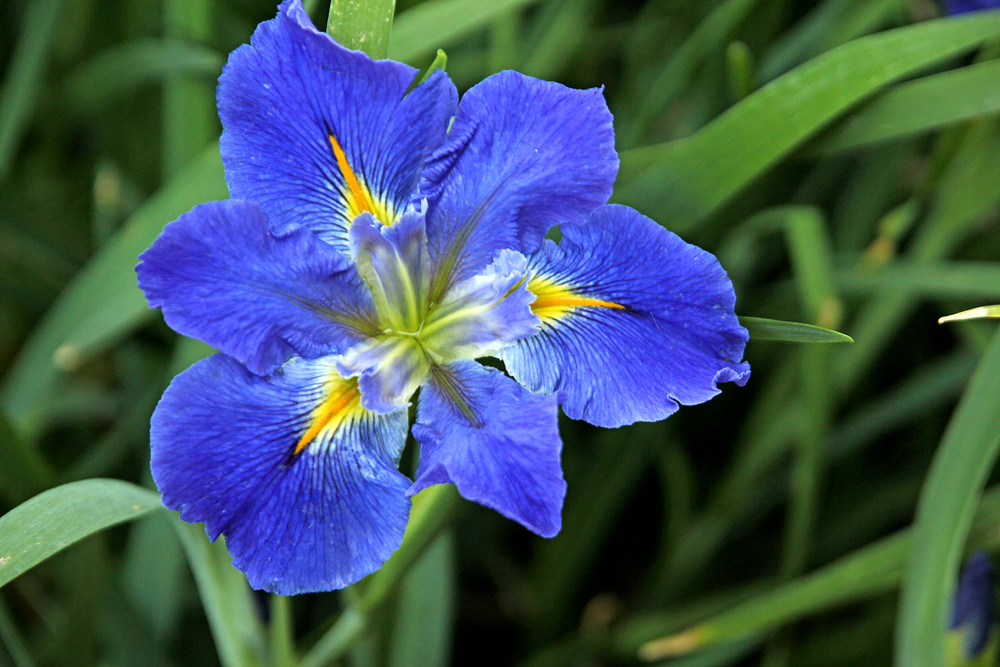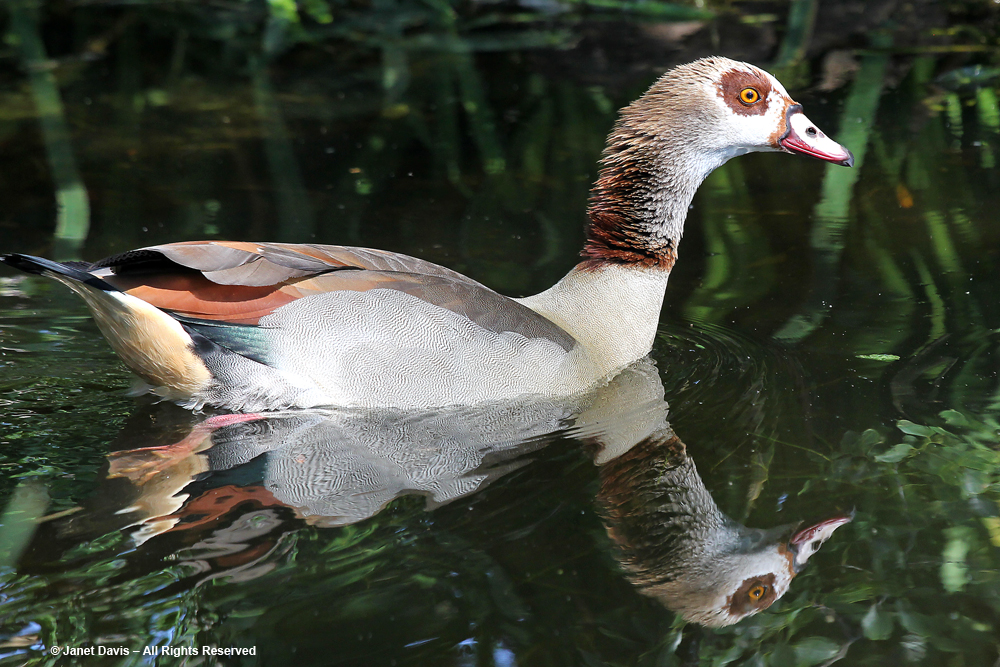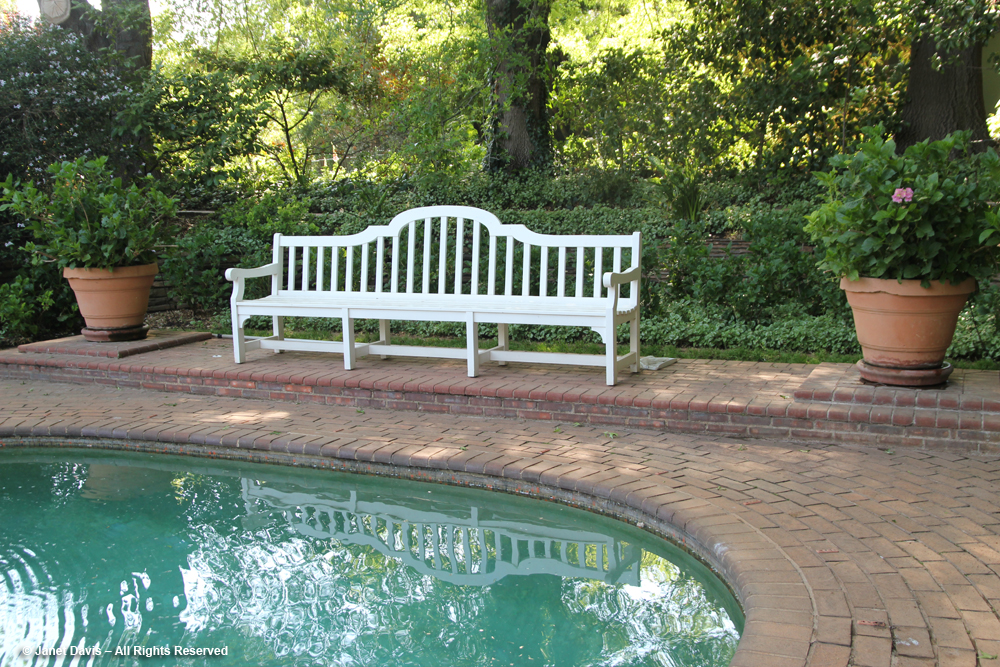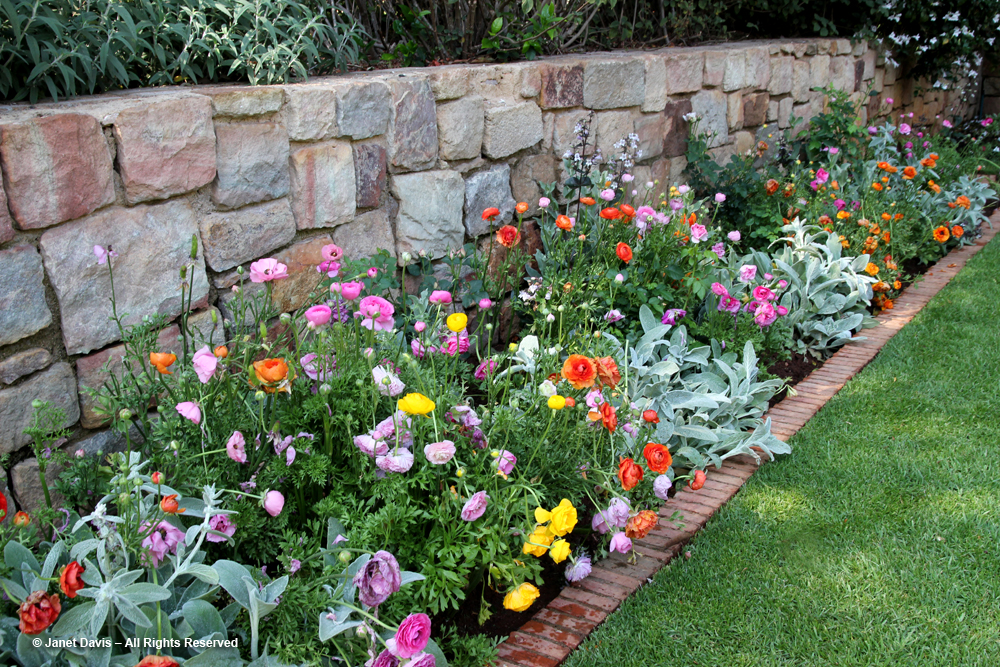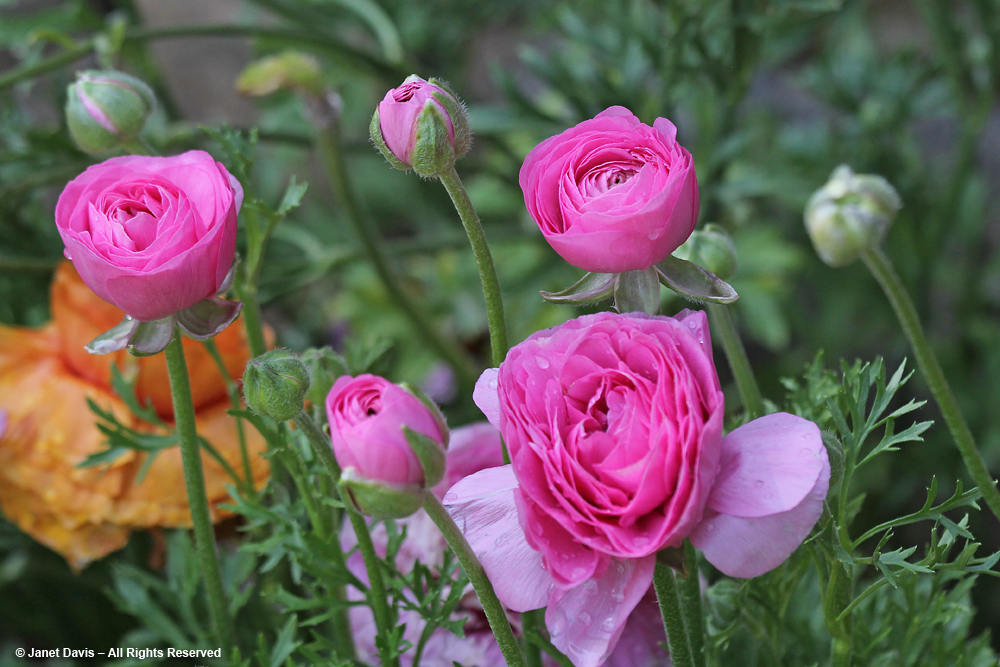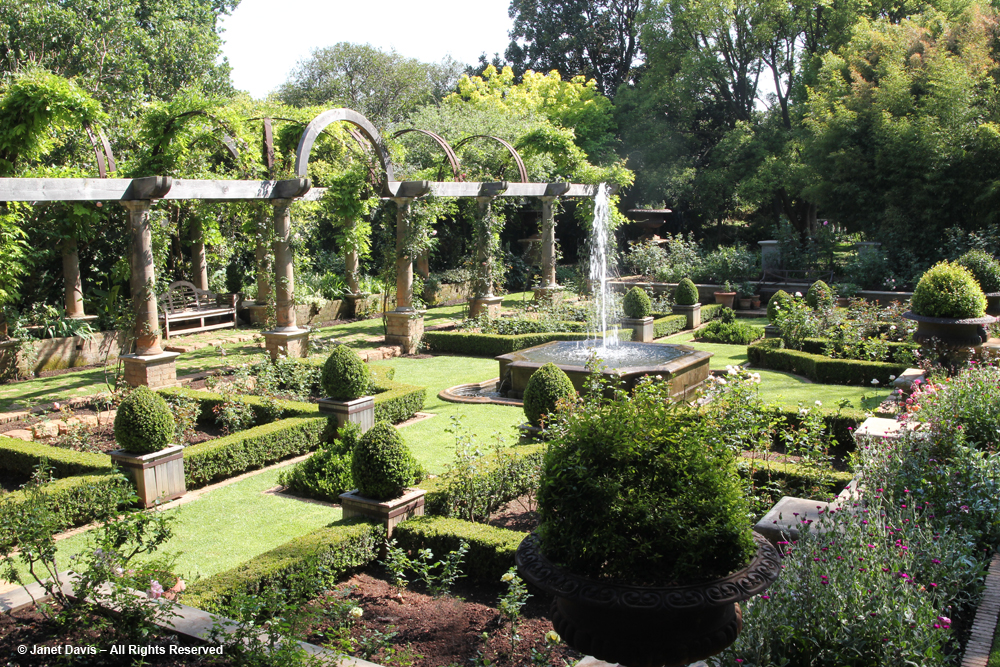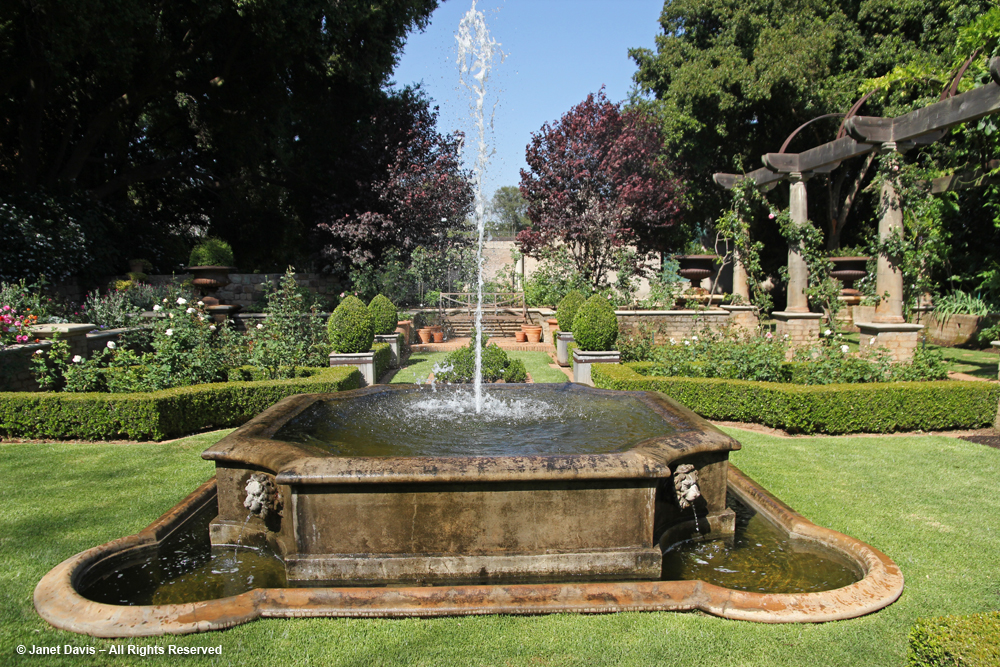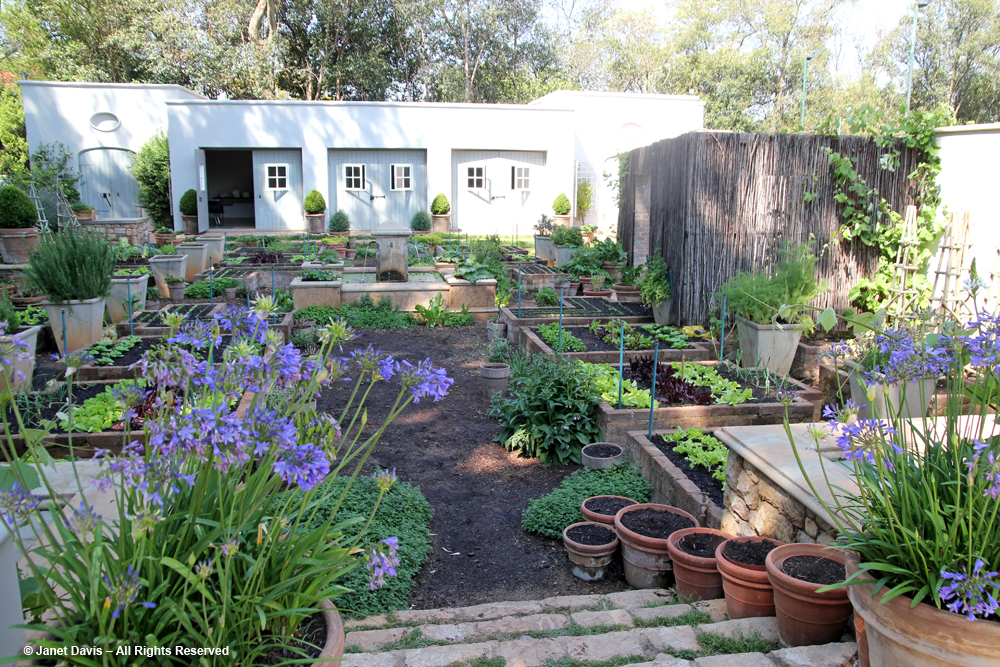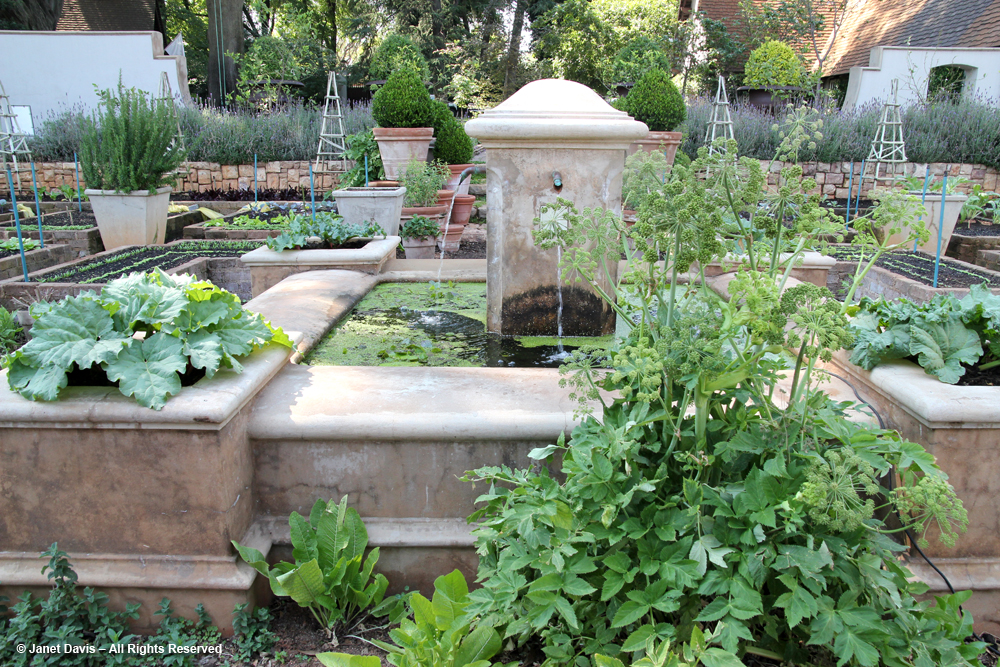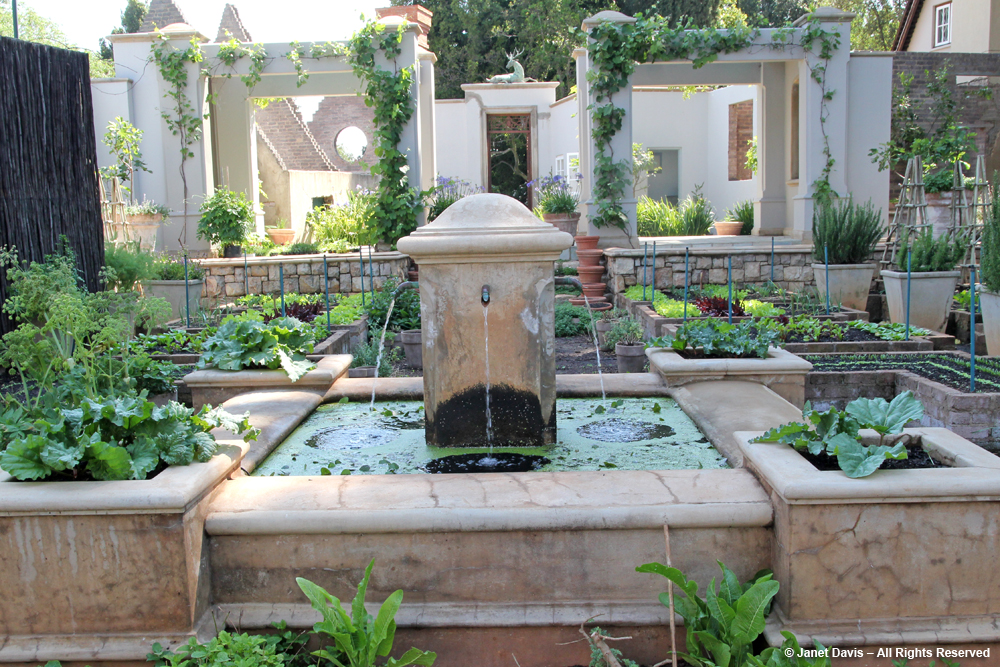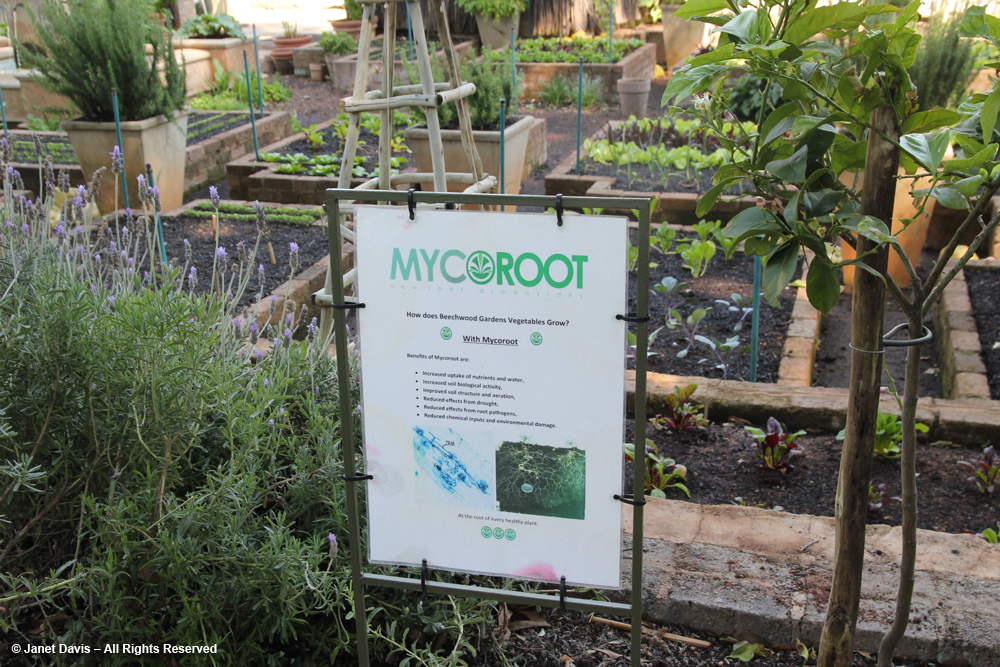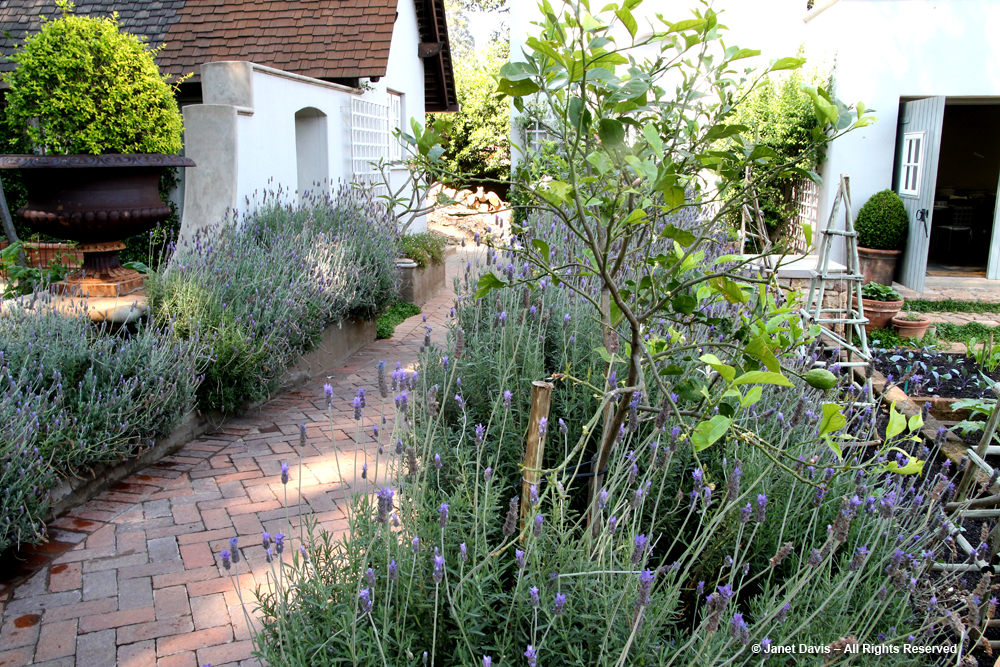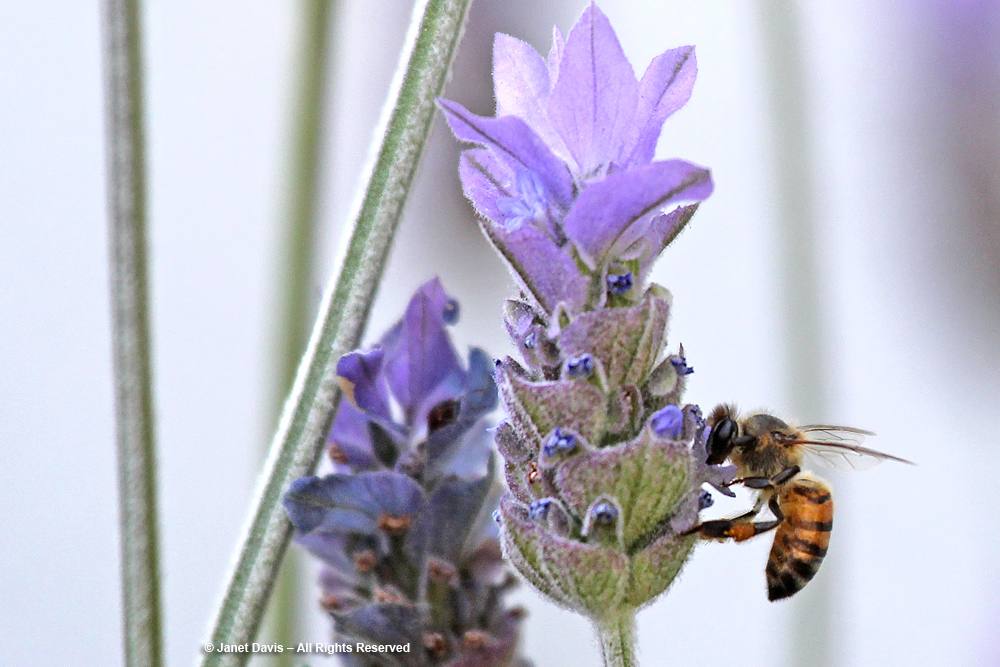Today, the 10th day of our South Africa garden tour, we’re heading out of Cape Town with our ultimate destination the town of Hermanus for whale-watching. Our route will take us around Table Mountain out of the city, then over the Cape Flats and ultimately, on R44 or Clarence Drive, along the seashore of False Bay (so-called because it tricked a lot of mariners who thought they had already rounded the Cape of Good Hope into Table Bay). False Bay has some smaller bays, including Gordon’s Bay, which gives its name to a specific, endangered plant, the Gordon’s Bay pincushion (Leucadendron bolusii). The road will cut across the point under the Kogelberg Nature Reserve and we will stop in Betty’s Bay at the Harold Porter National Botanical Gardens (red arrow on the map).
I point my camera through the window of the moving bus to capture some of the magnificent coastal scenery on the way. This is Kogel Bay, approaching the Kogelberg Nature Reserve, where the wind often blows very hard, making it a favourite spot for surfing. And sadly, though it’s normally considered a low-risk area for sharks, a young body-boarder was killed here by a great white shark in 2012.
Down the beach, a tidal pool has been partly enclosed for safe swimming.
Visitors can camp here and bring food to “braii” (barbecue).
Though the rocks are a favourite place from which to fish, many anglers have also been swept into the sea near here, and their memorial crosses dot the shore.
A little more than an hour out of Cape Town, we arrive at the Harold Porter Botanical Gardens. This stop is a late addition to our itinerary and most of us on the tour could not be happier. We’ve seen a lot of beautiful private gardens in our first 9 days, but the botanical enthusiasts are itching to see the unique fynbos flora! And here (sadly in a bit too much sunshine for a good photo) are some of the plants we’ll see in bloom at Harold Porter, including yellow Leucospermum conocarpodendron, orange Leucospermum cordifolium and pink watsonia.
Less than a year before our visit, in November 2013, the garden was inundated with mud and water from heavy rains that caused a landslide from the mountains behind. Photos appear here behind some of the other plants in bloom.
There’s a lovely container of indigenous flowers in the garden entrance room.
The garden sits between the sea at Betty’s Bay (that is the gorgeous blue sceptre, Aristea capitata at the right) ….
…..and the Kogelberg Mountain Range, whose slopes are spangled with the unique fynbos species of the Cape Floristic Province. Here’s a little video on the Kogelberg Nature Reserve.
Conscious of the time, I rush madly from bed to bed, moving from the bottom near the visitor centre up to the bridge that leads to the fynbos trail.
I zero in on a sprawling plant, below, from the bed above. It’s Felicia fruticosa, shrub aster or bush felicia. It reminds me a little of our autumn-flowering North American asters.
Here’s the familiar fan aloe, now renamed Kumara plicatilis, with a great backdrop of the mountains.
And lots of little flowers I’m not familiar with, like these tiny “wild violets” Monopsis unidentata…..
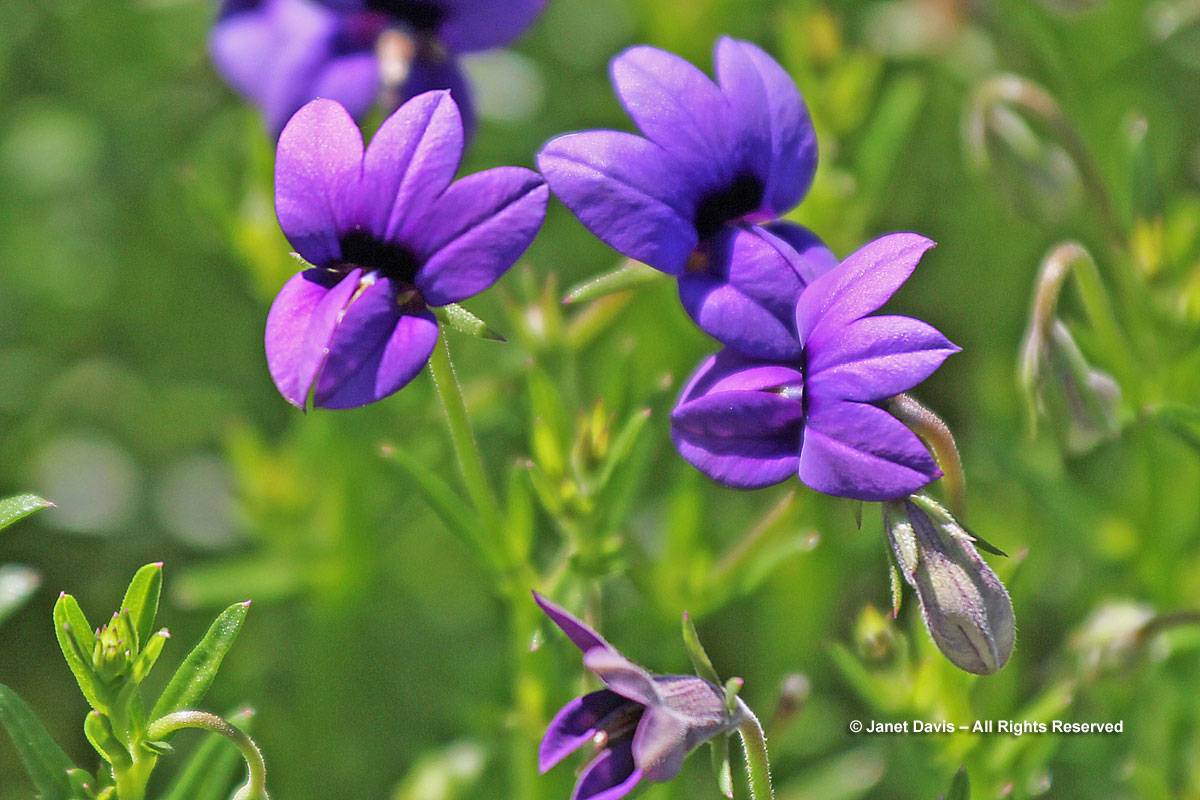
….. and this shrubby groundcover called doll’s rose or hermannia (Hermannia pinnata)….
And the amazing little strawflower-like plant called Cape snow, Syncarpha vestita.
We’ll see a lot of this little wild scabious (Scabiosa incisa) in the gardens around Cape Town – and also the pretty Acraea species butterfly nectaring on it.
And here’s sweet little Pelargonium citronellum, which we know in North America for its derivative essential oil citronella, commonly used as a natural mosquito repellant.
I love botanical gardens that use their plants and the environment in which they grow to offer educational insights that go beyond simple identification. This little display explains how the tannins in the tough fynbos plants make their way into the groundwater, turning it brown.
Here is the inflorescence of Brunia albiflora, called knopbossie or “knob-flower” in Afrikaans because of the shape of the flowers. Like many fynbos species it is nominally serotinous, meaning the seeds are disseminated following a fire (though it can also seed without fire). According to plantzafrica, it is endemic to this part of the Western Cape, from the Hottentots Holland Mountains to Hermanus.
Protea nitida or wagon-tree (waboom in Afrikaans) has distinctive blue-green leaves and fluffy white flowers. It’s one of the few proteas that can become a small tree, in time reaching 15-30 feet (5-10 metres).
Here’s the beautiful and complex flower of the tree pincushion (Leucospermum conocarpodendron), the largest of the pincushion proteas.
And two of the most commonly-seen, but beautiful, fynbos species, blue sceptre (Aristea capitata) and red pincushion protea (Leucospermum cordifolium). Don’t they look amazing together?
A wetland with a little bridge near the top of the garden contains a profusion of striking, yellow-flowered Wachendorfia thyrsiflora. Its common name is bloodwort or bloodroot for its red roots.
I wish we had at least another half-day in this charming garden, then we could cross this bridge and hike up into the fynbos.
…..where leopards are said to roam from time to time……
……but where we would be much more likely to run into the wild Leucospermum cordifolium spangling the fynbos than leopards. Isn’t this fabulous?
However, it’s time to head back to the bus for the short hop down the highway to Hermanus to look for whales. But this little botanical garden has stolen my heart.

